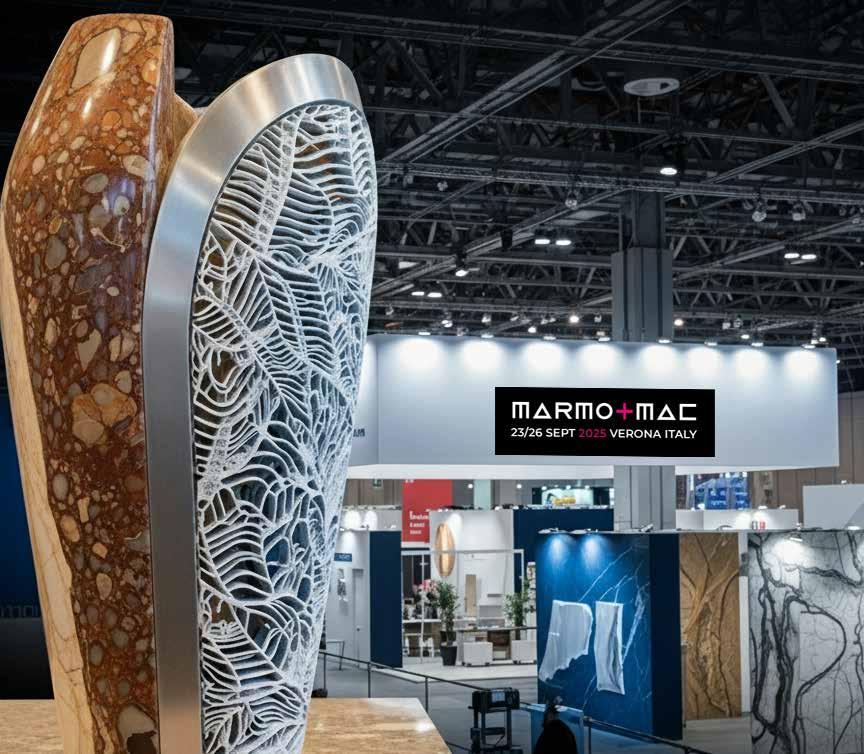
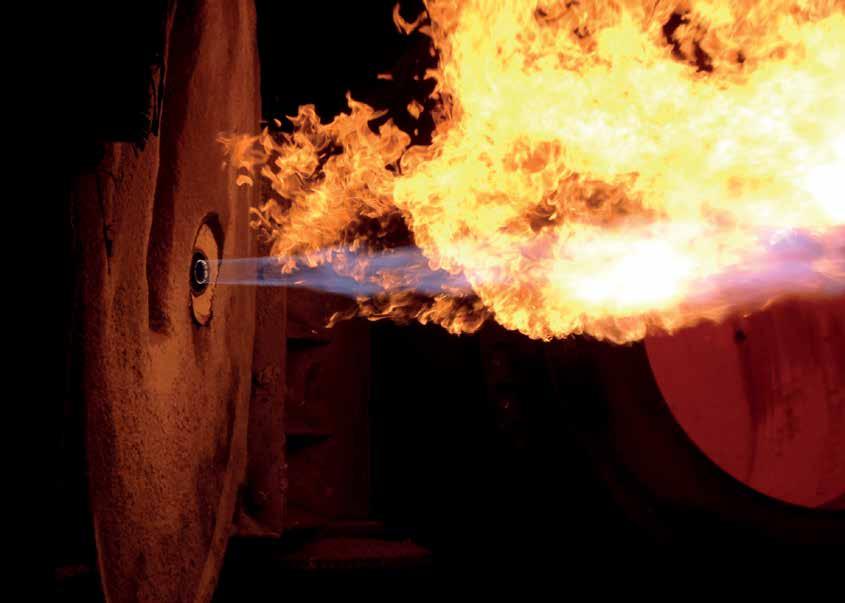



Glass fusion technology with extended functionality and flexibility for unrivalled performance
The Cleanfire® HRx burner can operate safely with an oxygen level above 95 per cent, offering the following benefits over air-fuel technology:
• Increased flame radiation for high fuel efficiency
• Ultra-low NOx emissions
• Foam reduction capability for higher quality glass production
• Improved productivity

For further information, please contact us
proposta@gasin.com
The Natural Stone industry is a pillar of the country's economy, ranking as the second-largest per capita exporter in the world and the seventh-largest producer worldwide, where exports, relative to imports, amount to more than 550%, totalling 470 million euros, with China, France, the USA, Germany and the United Kingdom as main destinations. The Portuguese Natural Stone Industry also employs around 14500 jobs, making a significant contribution to the national economy.*
This sector combines the tradition and inherent beauty of Natural Stone with technological modernisation, increasingly stringent performance requirements in modern construction, design and high standards of sustainability, resulting in a product with high commercial value that is recognised internationally.
One of the world's leading showcases for Natural Stone is MARMOMAC in Italy, where innovation, tradition, design and engineering come together. It is also a privileged showcase to affirm the identity and competitiveness of an industry that, in Portugal, has managed to combine experience, technical competence and international reach.
In this context, CTCV, in close partnership with ASSIMAGRA, presents this special edition of TÉCNICA magazine, dedicated to the Portuguese presence at this international exhibition. This publication aims to showcase the talent, versatility, design and sustainability that define the national Natural Stone industry, highlighting the companies that transform it into a product of excellence daily and reinforce Portugal's international reputation in this sector.
With a clear commitment to sustainability and decarbonisation, the national Natural Stone industry wants to position itself as a leader in sustainable production. By focusing on a detailed analysis of the life cycle and carbon footprint, it is important to quantify carbon emissions, resource management and consumption at all stages of the product life cycle, certifying it with strict environmental performance criteria through Environmental Product Declarations (EPDs) in line with the requirements of the new construction product regulations and the future Digital Product Passport (DPP).
It also follows a progressive path of decarbonisation until 2050, with important milestones along the way, including a reduction in GHG emissions of between 30% and 40% by 2030, through greater investment in energy efficiency and partial electrification, a reduction by 2040 through the adoption of renewable energies and low-carbon fu-
* Source: ASSIMAGRA
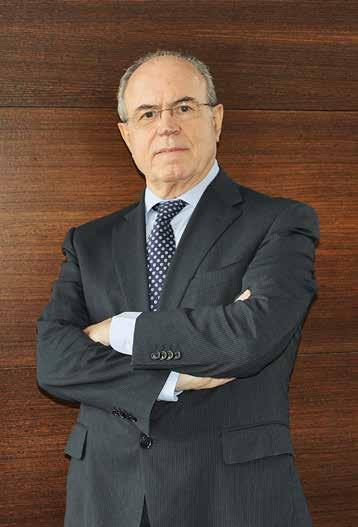
els, until carbon neutrality is achieved with CO2 removal technologies and complete process electrification by 2050.
CTCV, with its mission to support industry in technological innovation and the implementation of more sustainable and decarbonised processes, is a unique partner of this industry, supporting its transition and enhancing competitiveness in highly demanding markets.
Jorge Marques dos Santos Chairman of the Board of CTCV
PORTUGUESE NATURAL STONE AT MARMOMAC: A JOURNEY OF EXCELLENCE AND GLOBAL RECOGNITION
STONEBYPORTUGAL: THE GLOBAL SIGNATURE OF PORTUGUESE NATURAL STONE
ROAD TO 2050: Towards carbon neutrality of the Natural Stone sector by 2050
ENVIRONMENTAL FOOTPRINT IN THE NATURAL STONE SECTOR: A CHALLENGE AND AN OPPORTUNITY
Pride of Stone. Raw Dialogues.
BROOT - A FERTILE DIALOGUE BETWEEN ANCESTRAL TRADITIONS AND CONTEMPORARY DESIGN
TECHNICAL GUIDE TO NATURAL STONE: FROM DESIGN TO MAINTENANCE IN CONSTRUCTION
The New Construction Products Regulation (EU) 2024/3110: Sector Context and New Requirements for the Natural Stone Industry
BIM Methodology: An Irreversible Opportunity for the Natural Stone Sector in Portugal
CTCV – Innovation and Technological Centre and Standardization in the Natural Stone Sector
Environmental Product Declarations and the Future of Sustainable Construction: Insights from the Stone Sector
EN 12440: A NECESSARY REVIEW OF THE DENOMINATION CRITERIA STANDARD TO ELEVATE EU NATURAL STONE IN A DIGITAL AND SUSTAINABLE MARKET
Cultural heritage in stone: potential of the use of additive manufacturing in restoration
STONE BYPORTUGAL AWARDS - EXCELLENCE AND INNOVATION IN THE INTERNATIONAL PROJECTION OF PORTUGUESE NATURAL STONE
Companies at MARMOMAC 2025
Ownership, Publishing and Editorial Office
CTCV - Innovation and Technological Centre
Rua Coronel Veiga Simão, 3025-307 Coimbra (T) 239 499 200 (E) comunicacao@ctcv.pt (W) www.ctcv.pt
VAT No.: 501632174
Director Deputy Director
António Baio Dias Sofia David
Associate Director Editor
Sandra Carvalho Jorge Marques dos Santos
Coordinator
Nuno Nossa
Contributors
Anabela Amado, A. Silva, A. Magalhães, Ana Sofia Amaral, A. Vinagre, C. Carvalho, Carlos Costa, Célia Marques, Cláudia Paiva Silva, G. Matias, Guilherme Ascensão, Helena Teixeira, Hélio Jorge, Hugo Rodrigues, Isabel Antunes, Inês Rondão, J. Carvalho, Marisa Almeida, Milene Lopes, Pedro Frade, Pedro Oliveira, P. Rebola, R. Alves, Sandra Carvalho, Sandra Chambel, Sofia Ferreira, Victor Francisco, Victor Ferreira
Design and Layout
José Luís Fernandes
Cover
Designed using Gemini AI capabilities
Printing
Gráfica Almondina - Progresso e Vida; Empresa Tipográfica e Jornalistica, Lda Rua da Gráfica Almondina, Zona Industrial de Torres Novas, Apartado 29, 2350-909 Torres Novas (T) 249 830 130 (E) geral@grafica-almondina.com (W) www.grafica-almondina.com
Print Run
500 copies
This is a registered periodical publication with ERC (Regulatory Entity for the Media) under nº 127420.
Editorial Statute available at: https://www.ctcv.pt/estatuto-editorial.pdf
Reproduction of texts, in whole or in part, is prohibited without citing the source. Signed articles reflect the views of their authors.
Start: October 2025 Duration: 120 hours.
Aimed at industry professionals, recent graduates, students, and all those who wish to deepen their knowledge of the sector.
Participants will be able to deepen their knowledge in the eld of ornamental stone industry technologies, covering processes ranging from extraction to transformation and valorisation.
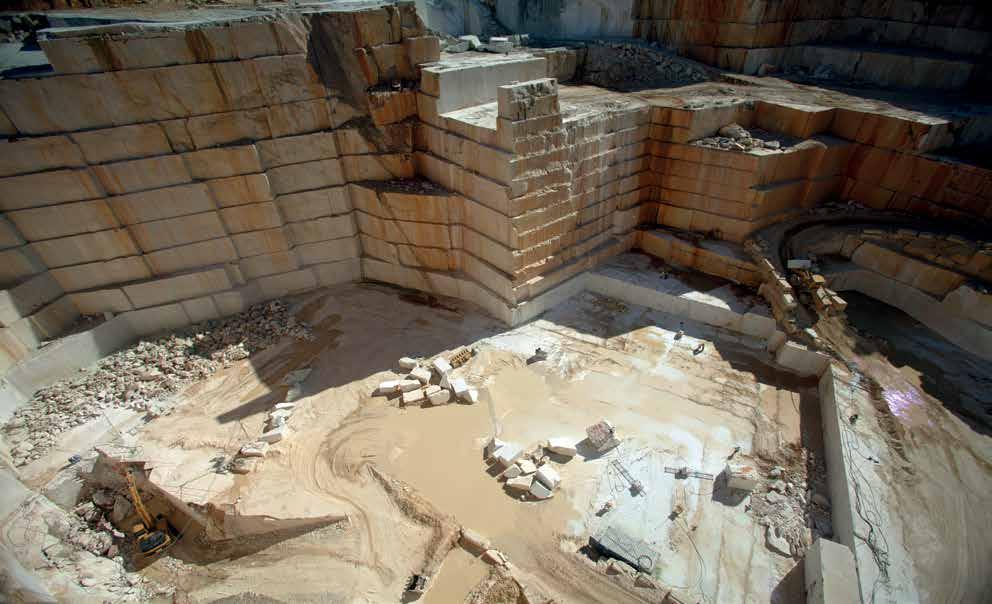
This course o ers a comprehensive approach across the entire value chain, also integrating topics related to quality, innovation, and sector sustainability.
• General geology
• Occurrences in Portugal
• Geomorphological, structural, and environmental constraints of mining
• Methods and techniques of extraction processes
• Performance assessment and physical-mechanical characterisation
• Legal framework for research and mining licensing
• Processing and enhancement techniques
• Pathologies, maintenance, and restoration
• Standardisation, certi cation, and product quality
• Management systems, valorisation, and market requirements
• Circular economy, industrial symbioses, and decarbonisation
• Innovation, development, and digitalisation
Célia Marques
ASSIMAGRA – Portuguese Association of the Mineral Resources Industry
As the natural stone industry converges once again in Verona for MARMOMAC 2025, Portugal's presence stands as a testament to more than two decades of strategic vision, collaborative effort, and unwavering commitment to excellence. Our participation in this prestigious international exhibition represents far more than a commercial endeavor—it embodies the transformation of Portuguese natural stone from a regional industry into a globally recognized symbol of quality, innovation, and sustainability.
The journey of Portuguese natural stone at MARMOMAC reflects the broader evolution of our industry's internationalization strategy. Under the leadership of ASSIMAGRA—Portuguese Association of Mineral Resources Industry—for over 25 years, what began as individual company participations has evolved into a sophisticated, coordinated presence that positions Portugal among the world's leading natural stone nations. This transformation has been neither accidental nor effortless; it represents the culmination of strategic planning, collective investment, and an unwavering belief in the exceptional quality of Portuguese stone.
This remarkable presence at MARMOMAC serves multiple strategic purposes that extend far beyond immediate commercial transactions. The exhibition provides Portuguese companies with unparalleled access to global buyers and specification professionals, enabling direct engagement with decision-makers from markets spanning every continent. Simultaneously, it offers invaluable opportunities to observe emerging market trends, analyze competitor strategies, and identify new business opportunities that might otherwise remain invisible from our domestic perspective.
The evolution from individual company participation to coordinated brand presence under StonebyPORTUGAL, created by ASSIMAGRA, represents a strategic maturation that reflects our industry's sophisticated understanding of global marketing dynamics. This unified approach allows smaller Portuguese companies to benefit from collective marketing strength while maintaining their individual identities and specializations.
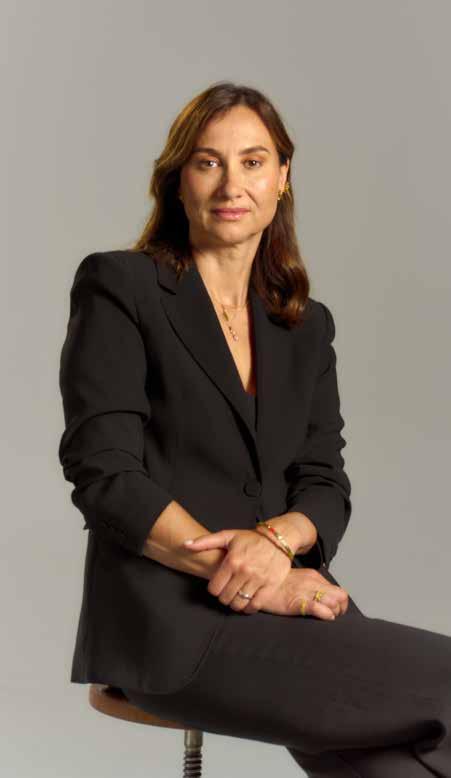
The brand serves as a quality guarantee that communicates Portuguese excellence to international markets, facilitating market entry and relationship development in regions where individual companies might face significant barriers to recognition.
Portugal's achievements at MARMOMAC are particularly remarkable when considered within the context of our nation's size and resources. As the 7th largest natural stone producer globally, despite having only 10.3 million inhabitants, Portugal demonstrates that excellence transcends scale. Our industry's export performance—with over 80% of production destined for international markets and export values reaching €470 million in 2024—provides the foundation for sustained investment in international marketing initiatives like MARMOMAC participation.
Looking toward the future, Portugal's participation in MARMOMAC will continue to evolve in response to changing market dynamics and emerging opportunities. The integration of digital technologies, sustainability initiatives, and design innovation will shape how Portuguese companies present themselves and engage with global markets. The foundation of excellence, collaboration, and strategic vision that has driven our success over the past decades provides the platform for continued growth and recognition.
The story of Portuguese natural stone at MARMOMAC continues to unfold, with each edition building upon the successes of previous years while opening new chapters of opportunity and achievement. As we look ahead, we do so with the knowledge that our foundation is solid, our vision is clear, and our commitment to excellence remains unwavering.


Digital Maturity Diagnosis; Natural Stone Slab Digitization and Integrated Digital Design; Quarry and Shop Floor Sensorization; Advanced Training for Professionals
ASSIMAGRA - Portuguese Association of the Mineral Resources Ind ustry
As we gather in Verona for MARMOMAC 2025, one of the world's most prestigious natural stone exhibitions, it is with immense pride that we present this special edition of CTCV's Technical Publication, entirely dedicated to Portugal's thriving natural stone industry. This publication stands as a testimony to the remarkable journey of an industry that has transformed itself into a global benchmark for quality, innovation, design, and sustainability.
The Portuguese natural stone sector exemplifies the power of international markets as a catalyst for industrial excellence. As a predominantly export-oriented industry, internationalization has not merely been a growth strategy – it has been the fundamental driver that has shaped our sector's identity, competitiveness, and continuous evolution. With over 80% of our production destined for international markets, the sector has developed an acute understanding of global standards, diverse cultural preferences, and the most demanding technical specifications.
This export-driven approach has cultivated a culture of innovation within Portuguese companies, compelling them to continuously invest in advanced technologies, sustainable practices, and design excellence. The result is an industry that does not simply extract and process stone, but creates solutions that enhance architectural projects worldwide, from the most iconic buildings in major capitals to intimate residential spaces that demand the highest levels of craftsmanship.
The statistical performance of Portuguese natural stone exports since 2008, year when ASSIMAGRA started to have sectorial statistics, tells a compelling story of resilience, adaptation, and strategic growth. Despite facing significant global challenges, including the 2008 financial crisis, European debt crisis, and the recent pandemic, the sector has demonstrated remarkable stability and growth momentum.
From an export value of 329 million Euros in 2008, the industry achieved its historical peak of 496 million Euros in 2022, representing
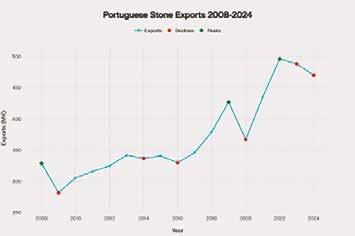
a 51% increase over this period. Even with the natural market adjustments of recent years, exports maintained strong performance at 470 million Euros in 2024, demonstrating the sector's fundamental strength and market positioning.
The sector's export resilience is further evidenced by its consistent trade surplus, maintaining coverage rates that have ranged from 438% to over 924%, meaning Portugal exports between four to nine times more natural stone than it imports. This extraordinary performance reflects not only the superior quality of Portuguese stone but also the industry's capacity to create value-added products that command premium prices in international markets.
Volume performance has been equally impressive, with exports reaching peak quantities of 2.2 million tons in 2019, stabilizing around 1.8 million tons in recent years. This combination of value and volume growth indicates a successful strategy of market diversification and product sophistication.
Portugal has earned its position as the seventh-largest producer and extractor of natural stone worldwide, a remarkable achievement
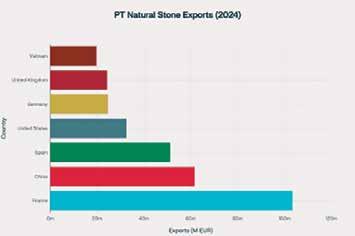
for a country of 10.3 million inhabitants, and a very small footprint area. This ranking reflects not just natural geological advantages, but decades of investment in technology, expertise, and market development.
The global reach of Portuguese natural stone is exemplified by its diverse export destinations. France remains our leading market with 103.4 million Euros in imports, followed by China at 61.6 million Euros and Spain at 51.2 million Euros. The presence of markets as varied as the United States, Germany, the United Kingdom, and Vietnam demonstrates the universal appeal and adaptability of Portuguese stone products.
The international recognition of Portuguese stone extends beyond commercial success. Five Portuguese stones have been officially recognized as "Heritage Stones" by the International Union of Geological Sciences (IUGS): Ançã limestone, Estremoz marble, Lioz limestone, Arrábida breccia, and Porto granite. This recognition underscores the cultural and historical significance of Portuguese natural stone in global architectural heritage.
ASSIMAGRA: Over 25 Years of Internationalization Leadership
For more than two and a half decades, ASSIMAGRA – Portuguese Association of Mineral Resources Industry – has been the driving force behind the sector's internationalization strategy. Founded in 1964 as the National Guild of Marble, Granite and Similar Rock Industries, ASSIMAGRA transformed in 1974 and has since evolved into a sophisticated organization that combines sectoral representation with strategic market development.
The association's internationalization efforts are embodied in successive INTERSTONE projects, comprehensive programs that combine traditional trade fair participation with innovative digital marketing strategies. The current INTERSTONE 2025/2026 project, with a total
eligible investment of €3.8 million and €1.87 million in incentives, demonstrates the scale and ambition of these coordinated efforts.
These projects include participation in major international fairs across different continents, in strategic regions, development of digital content and platforms, access to online marketplaces and the support for the companies to create their own webstores, with the objective to support Portuguese companies in their global expansion. The collaborative approach allows small and medium enterprises to access international markets that would be prohibitively expensive to approach individually.
ASSIMAGRA's commitment to internationalization extends beyond traditional commercial activities. Initiatives like the First Stone with a disruptive approach involving architects, designers and artists to work with Portuguese Natural Stone, as never before and more recently BROOT, to create innovative dialogues between Portuguese stone and other sustainable materials, are examples of excellence of what is also developed by ASSIMAGRA to step forward to the future of the Portuguese Natural Stone.
The internationalization strategy of Portuguese natural stone is fundamentally anchored in the StonebyPORTUGAL brand, a sophisticated marketing platform that encapsulates the sector's commitment to quality, innovation, and sustainability. This sectoral brand represents far more than a commercial identifier – it embodies a comprehensive value proposition that communicates Portuguese excellence to global markets.
StonebyPORTUGAL was developed to address a critical need in international markets: the ability to communicate coherently and credibly the unique attributes of Portuguese stone products and companies. The brand serves as a unifying element that allows individual companies to benefit from collective marketing strength while maintaining their individual identities and specializations.
The brand strategy includes multiple dimensions of value creation. It emphasizes the geological uniqueness of Portuguese stones, the advanced technological capabilities of processing companies, the design innovation that characterizes Portuguese applications, and the environmental sustainability that guides modern extraction and processing practices. This multifaceted approach enables Portuguese companies to compete effectively in premium market segments where value exceeds price considerations.
Digital integration is a cornerstone of the StonebyPORTUGAL strategy. The brand's digital platform serves as a comprehensive resource for architects, designers, and specification professionals worldwide, providing technical information, case studies, and direct connections to Portuguese companies. This approach recognizes that modern
commercial success requires sophisticated digital presence combined with traditional relationship-building.
The brand's effectiveness is demonstrated through its adoption by Portuguese companies participating in international fairs and its recognition by global industry professionals. StonebyPORTUGAL has become synonymous with quality and reliability, facilitating market entry and relationship development in regions where Portuguese companies might otherwise face significant barriers to recognition.
As this special edition of TECNICA demonstrates through its comprehensive coverage of technical innovations, sustainability initiatives, and company showcases, the Portuguese natural stone industry stands at a remarkable inflection point. With 60 years of ASSIMAGRA leadership, over 25 years of systematic internationalization efforts, and a proven track record of export excellence, the sector is uniquely positioned for continued global expansion.
The industry's 14,000 professionals, working across more than 2,000 companies, represent a formidable combination of traditional craftsmanship and modern technological capability. The sector’s €1.2 billion annual turnover and consistently strong export performance provide a solid financial foundation for ongoing investment in innovation, sustainability, and market development.
Portuguese natural stone has increasingly captured the attention of architects, designers, and developers seeking authenticity, durability, and sustainability. Strategic initiatives like StonebyPORTUGAL have helped redefine the global perception of Portuguese stone — not just as a construction material, but as a medium for culture, art, and design.
Projects such as First Stone have exemplified this shift, bringing together renowned international architects and artists to explore the creative and structural potential of Portuguese stone. Similarly, the Life of Marbel project has showcased how stone can be integrated into contemporary architecture and sustainable design narratives, bridging heritage with future-forward thinking. More recently, BROOT has pushed boundaries by combining digital design, sustainability, and biomimicry to present Portuguese stone in radically new formats and environments — from urban interventions to experimental pavilions.
These initiatives are more than showcases; they are strategic instruments that open new markets, attract new audiences, and elevate the Portuguese natural stone sector to new realms of visibility and prestige.
Looking ahead, the challenges and opportunities are clearly defined. Global demand for natural materials continues to grow, driven by environmental awareness and a design shift towards authenticity and
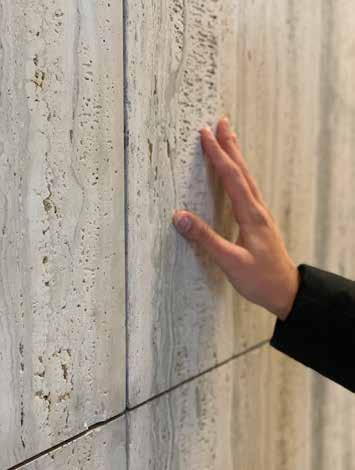
longevity. Portuguese companies are exceptionally well-positioned to respond to this demand, leveraging their unique geological resources, advanced processing expertise, and growing design culture.
The path forward will require continued commitment to the principles that have driven success: international focus, collaborative action through ASSIMAGRA, strategic brand development through StonebyPORTUGAL, and unwavering dedication to quality and innovation. As we continue to build on these solid foundations, the Portuguese natural stone industry is poised not only to grow — but to lead — bringing the timeless beauty and enduring value of Portuguese stone to visionary projects around the world.
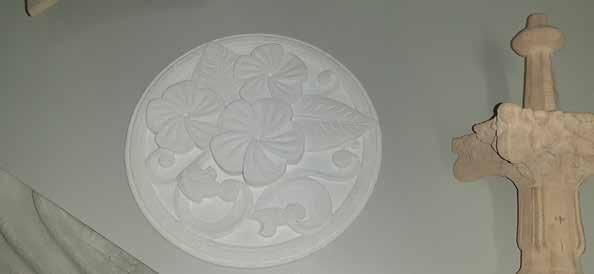
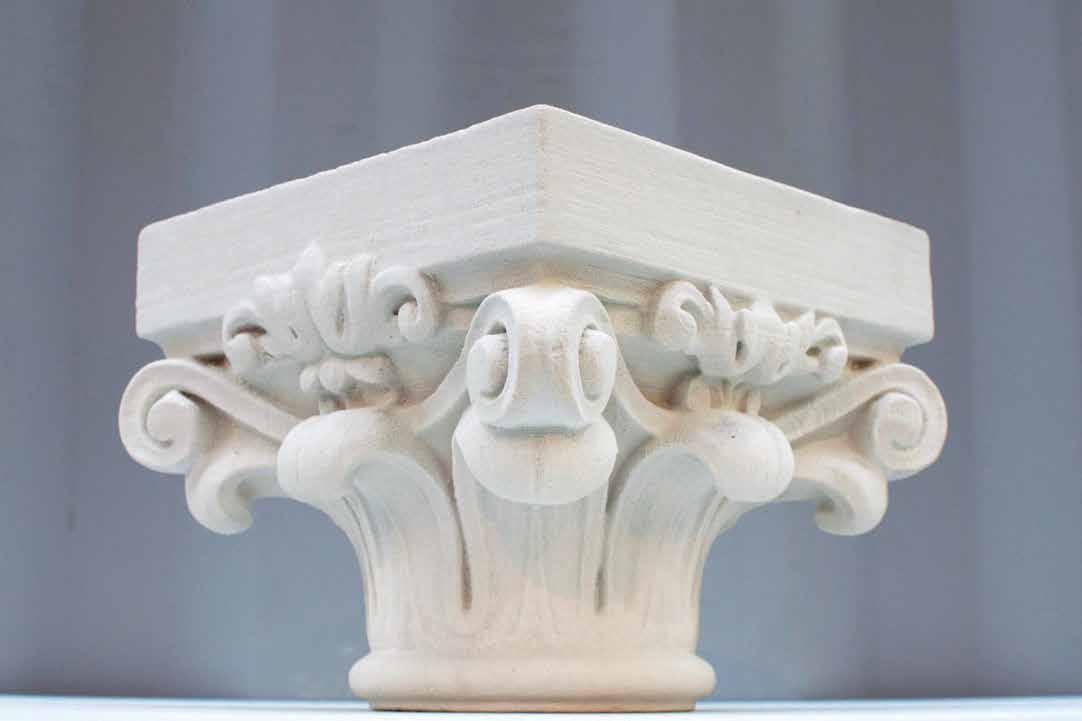



Manufacturing of components in limestone, granite and marble Development using new materials and applications
Contact: inovacao@ctcv.pt
CTCV materials : habitat | iParque Parque Tecnológico de Coimbra, 3040-540 ANTANHOL (T) 239 499 200 (E) centro@ctcv.pt
Isabel Antunes, Inês Rondão, Marisa Almeida, Pedro Frade, Anabela Amado, Milene Lopes, Carlos Costa, Sandra Chambel, Victor Francisco, Sandra Carvalho
CTCV - Innovation and Technological Centre

ROAD TO 2050 – Roadmap for the Decarbonization of the Natural Stone Sector, is a two-years project led by ASSIMAGRA – Portuguese Mineral Resources (assimagra.pt) with the support of Technological Centre of Ceramics and Glass (CTCV), and funded by Recovery and Resilience Plan (NextGenerationEU). It is the only sector-specific initiative in Portugal dedicated to the Natural Stone sector, with the aim of outlining a roadmap to achieve carbon neutrality.
The main objective of Roadmap for the Decarbonisation of the Natural Stone Sector is to develop a reference document that provides guiding and feasible solutions to support the Natural Stone sector in decision-making on its path to decarbonization, aligned with national and European climate goals.
The roadmap addresses the most relevant decarbonisation vectors for the sector, along with the most relevant technologies and measures of decarbonisation currently available. It also takes into account technologies that, while currently at an early stage of development, show potential for implementation in the medium to long term. The roadmap further seeks to assess the effectiveness of the proposed decarbonisation strategies on the reduction of GHG emissions projected for this sector by 2050, while evaluating the associated economic impacts through the definition of cost-effective pathways. Among the decarbonisation strategies addressed for the sector, particular emphasis is given to energy efficiency, use of renewable energy and electrification of vehicles and equipment, the use of low-carbon fuels, industrial process digitalisation and adoption of circular economy strategies.
Alongside the development of the roadmap, a training and knowledge dissemination plan was carried out to ensure the involvement of all stakeholders and to encourage a sector-culture that supports the implementation of the identified measures, through the discussion and dissemination of decarbonisation strategies. Among the central actions outlined in the plan were included:
• creation of the project platform (roadto2050.assimagra.pt) for
dissemination of roadmap and the initiatives promoted within the scope of the project, and to serve as a decarbonization observatory, through technological monitoring in energy transition theme and environmental sustainability of Natural Stone sector.
• dissemination of project results, training, activities and educational resources, developed within the scope of the project, through traditional media, digital platforms and social media.
• organization of an Open Day involving the local community,
• development of Carbon Emissions Calculation Tool, available on the project website, designed to calculate the carbon emissions of companies operating in the Natural Stone sector. This tool also provides guidance on measures and techniques to help reduce companies’ carbon emissions, supporting them in the development and implementation of the decarbonisation roadmap for their industrial facilities.
• development of a Course on Decarbonisation of the Natural Stone Sector, aimed at training professionals within the industry, delivered in a MOOC (Massive Open Online Course) format.
• organisation of events and workshops designed to promote the project, presents its results, and engaging stakeholders in the sector decarbonation, with emphasis on the key strategies needed to achieve carbon neutrality.
The kickoff event of the ROAD TO 2050, held on 27 October 2023 in Alcobaça, officially marked the beginning of the project and saw
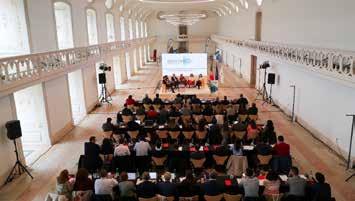
strong participation from various stakeholders in the Natural Stone sector. The programme featured several presentations focused on key topics for the sector’s decarbonisation, such as product life cycle assessment and its environmental footprint, Environmental Product Declarations (EPDs), and the role of digital transition in empowering companies to face new challenges.
Throughout the project, a set of regional workshops sessions was held, bringing together industry representatives, technologies pro-
viders and researchers. These sessions aimed to discuss short-, medium- and long-term decarbonisation solutions for the sector, and to gather input from industry stakeholders on the main challenges they face in the decarbonisation of their companies.
Also, as part of ROAD TO 2050 initiative, an event entitled Green Horizon: Sustainability in the Mineral Resources Sector, was held at Stone Ibérica 2025, on 28 March 2025. The event began with the presentation on the main target and decarbonization vectors outlined in the
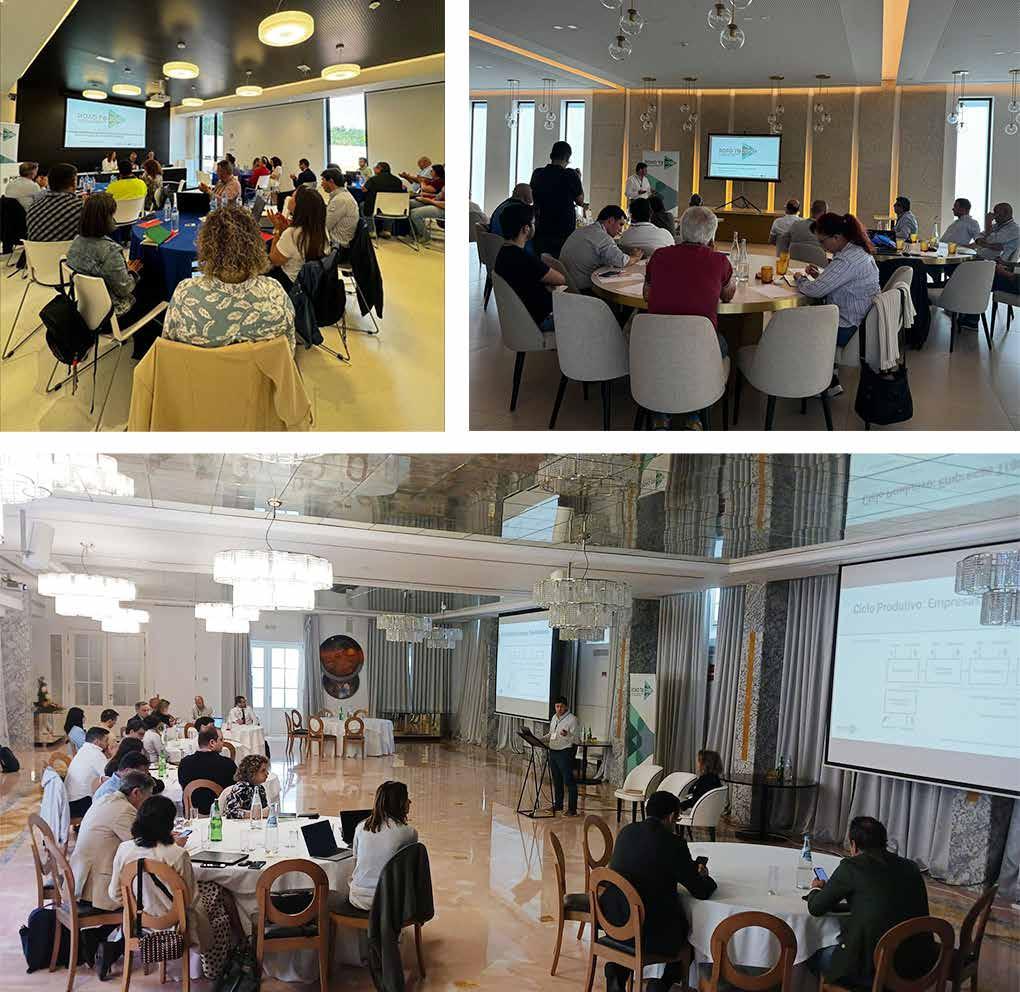
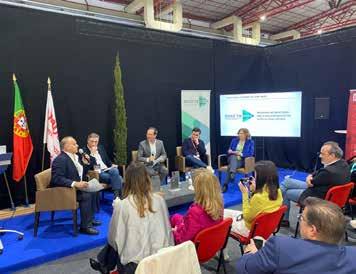
roadmap. This was followed by the roundtable discussion Strategies for Carbon Neutrality – Challenges of the Green Transition, featuring
portunities for the sector within the context of the energy transition.
The project’s closing event was held on September 18th at Sesimbra Natura Park. One of the key moments was the presentation of the results from the Decarbonization Roadmap of Natural Stone Sector. In addition to this, the several outputs developed throughout the project were showcased. Among them was the Carbon Emissions Calculation Tool, demonstrated through a practical case study to illustrate its application.
The event also featured the official launch of the Decarbonization Course for the Natural Stone Sector, which included the screening of an explanatory video detailing the structure and functioning of the course. Furthermore, the Executive Summary of the roadmap was unveiled, with both the video and summary made accessible through the project’s official website.
ROADTO2050 arises within the framework of national and European commitments to achieve carbon neutrality by 2050. Through this roadmap, companies have access to information that guides them in finding the most effective solutions for decarbonizing their processes. More than just a regulatory obligation, the decarbonisation of the Natural Stone sector represents a strategic opportunity to modernize the sector, enhance the global competitiveness of companies, and establish Portugal as a leader in sustainable Natural
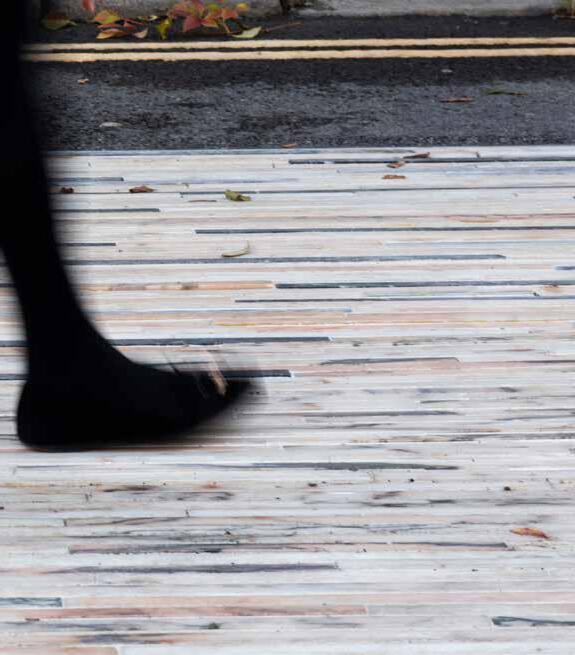
January 2026 to December 2028
Efficient and safe workplaces
Leadership
Sustainability and Decarbonisation
Circular economy
Environmental, social and corporate governance (ESG)
Energy efficiency and transition
Critical technical skills for business
Improved productivity, operational efficiency and logistics
Innovation: productive, technological and organisational
Digital economy
Industry 4.0
Artificial intelligence
Digital marketing
International markets
Business intelligence Promoted by
ASSIMAGRA - Portuguese Association of the Mineral Resources Ind ustry
The natural stone sector today faces an unavoidable challenge - responding to the growing demands for environmental sustainability. It is within this context that the "Environmental Footprint of the Natural Stone Sector" Project emerges, promoted and coordinated by ASSIMAGRA under the Sustainable Stone by Portugal Agenda, which aims to guide the sector towards more responsible and conscious practices. By focusing on detailed analysis of carbon and water footprints, the project provides a rigorous methodology for quantifying carbon emissions and water consumption throughout all phases of the product lifecycle. This approach offers companies in the sector the necessary tools to identify critical points in their production processes, optimise them, and implement more efficient solutions, both from an operational and environmental perspective.
The credibility of the results obtained is ensured by the adoption of international standards, such as ISO 14040, ISO 14044, and EN 15804, which guarantee not only technical consistency but also the comparability of collected data. The main objective of this initiative is to equip the sector with technical and strategic knowledge, promoting proactive environmental management that, whilst reducing negative impacts, reinforces companies' image as leading agents in the transition to a more sustainable economic model.
In this transformation process, digitalisation emerges as a fundamental element for accelerating the adoption of sustainable practices. The DIGITALbuilt project represents an innovative response to the sector's needs, offering companies specialised support for digitalisation and optimisation of their production processes. This initiative recognises that the transition to sustainability cannot be dissociated from technological modernisation, providing companies with the digital tools necessary to monitor, analyse, and continuously improve their environmental performance.
Through DIGITALbuilt, companies in the natural stone sector can access advanced technological solutions that enable the integration of environmental management systems with intelligent digital platforms. These tools facilitate automated data collection on energy and water consumption, real-time analysis of sustainability indicators,
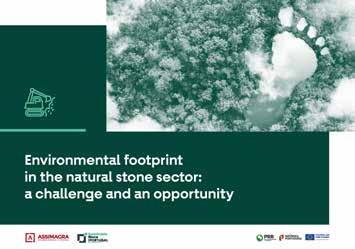
and the implementation of optimisation strategies based on scientific evidence. The digitalisation of processes not only increases operational efficiency but also ensures the precision and reliability of data necessary for rigorous calculation of environmental footprint.
Mastery of technical knowledge about the environmental footprint of natural stone today constitutes a decisive competitive advantage in the global market. This specialised knowledge enables the Portuguese sector to position itself distinctively against competing materials, demonstrating with scientific rigour and technical credibility that natural stone has always been and continues to be a genuinely sustainable material.
The ability to quantify and transparently communicate the environmental impacts of stone products represents a fundamental strategic asset. When companies master the methodologies for assessing carbon and water footprints, they can not only optimise their processes but also present concrete and verifiable data about the sustainability of their products to international markets. This technical competence becomes particularly relevant in a context where consumers and specifiers increasingly demand detailed information about the lifecycle of the materials they use.
The carbon footprint assumes a particularly relevant role given its direct relationship with current climate change. In the case of natural stone, these emissions are distributed throughout various moments of the product's lifecycle, beginning in the extraction phase and extending to its end of life. The "Environmental Footprint of the Natural Stone Sector" Project not only allows these emissions to be calculated with a high degree of detail but also identifies the main polluting sources, which include electricity consumption, the use of fossil fuels, industrial processes themselves, and transport.
In-depth technical knowledge about environmental footprint enables the sector to demonstrate with scientific data a reality that is often unknown: natural stone presents, in many cases, a significantly lower environmental footprint than alternative materials such as ceramics, concrete, or synthetic materials. This competitive advantage becomes evident when considering the complete lifecycle of products, including the exceptional durability of natural stone, its capacity for reuse and recycling, and the fact that it is a material that does not require energy-intensive manufacturing processes.
The ability to present rigorous comparative studies, based on internationally recognised methodologies, confers upon the Portuguese sector a technical credibility that translates into concrete commercial advantages. When a company can demonstrate that its natural stone products have a carbon footprint 30% lower than that of a competing material, or that its production process consumes 50% less water than industrial alternatives, it is creating a competitive differential based on solid scientific evidence.
Knowledge about the sector's footprint represents a decisive step towards aligning the sector with international commitments to decarbonisation and adoption of the best and most efficient practices in their production systems. Among the main strategies are the transition to renewable energy sources, improvement of energy efficiency, and rationalisation of logistics. These efforts are not limited to mere regulatory compliance - they are also an opportunity for companies to improve their reputation, attract new investors, and conquer demanding markets where sustainability is already a selection criterion.
Just as with atmospheric gas emissions, water also emerges as a central resource whose use must be reconsidered and rationalised. The water footprint, in this context, allows measurement of the total volume of fresh water consumed during production, which acquires particular importance in a sector where water is widely necessary - from extraction to polishing of pieces. In regions of Portugal with significant water restrictions, this management becomes even more critical.
The project contemplates the assessment of three dimensions of water: blue (captured from rivers or aquifers), green (from precipitation), and grey (necessary to dilute pollutants). With this data in hand, it is possible to detect inefficiencies and advance with solutions such as recirculation and treatment of used water - or, furthermore, the adoption of technologies that reduce consumption. This is, once again, an approach that not only protects the environment but generates tangible economic benefits. Additionally, it allows companies to reinforce their socioeconomic commitment to operate and demonstrate capacity to respond to the growing demands of the market and society.
For this transition to be successful, it is essential that the sector adopts a continuous commitment to monitoring and controlling its environmental parameters. The use of meters and sensors, for example, already allows real-time monitoring of energy and water consumption, identification of usage patterns, detection of failures, and swift action. Well-structured control also involves clear definition of environmental targets, standardisation of procedures, and continuous training of teams.
The integration of new technologies - such as digital platforms for environmental management - constitutes decisive support here. The DIGITALbuilt project exemplifies this approach, offering technological solutions that enable companies to integrate environmental monitoring into their operational management systems. These solutions provide updated and real-time data, conferring greater precision and speed to decision-making, whilst facilitating the implementation of continuous improvement strategies based on scientific evidence.
The combination of rigorous technical knowledge of environmental footprint and advanced digital tools creates ideal conditions for the natural stone sector to position itself as a leader in the transition to a more sustainable economy. This leadership is not based merely on declarations of intent, but on concrete data, scientific methodologies, and innovative technologies that allow unequivocal demonstration of the intrinsic sustainability of natural stone.
In summary, sustainability in the natural stone sector should be understood as a permanent journey of improvement - a process supported by rigorous measurements, informed decisions, and a proactive attitude. It is not merely about protecting the environment: it is about building long-term resilience and competitiveness, equipping the Portuguese sector with the technical and technological tools necessary to demonstrate to the world that natural stone is, and always has been, a sustainable and responsible choice.
Cláudia Paiva Silva MINERAL - Collaborative Platform
What is luxury? How can we describe the word without falling into the trap and deception of the superficial, unnecessary spending, or ostentation? Is luxury confined only to material goods, or does it go beyond that, being involved in a brand, a tradition, the passing down of oral and written word, manual activity, or even in the identity and culture of a region, of a country?
Luxury, in current times, transcends this superficiality, focusing on quality, exclusivity and sustainability. It is the search for authentic, personalized and memorable experiences, reflecting values of well-being and social responsibility. Luxury is having time, having comfort, and having the pleasure of enjoying products and services that respect ethics and the environment.
It may represent a lifestyle that privileges excellence and attention to detail, but as long as it promotes conscious and balanced consumption. In essence, modern luxury is the harmonious integration between pleasure, ethics and authenticity, valuing what really matters. And when associated with brands that characterize the cultural identity of a country, it gains a rich and meaningful dimension.
In Portugal, for example, the use of natural stone, such as Alentejo marble, or schist and granite, further north, represents a luxury rooted in tradition, history and artisanal excellence. These stones, worldwide recognized for their quality and beauty, transcend mere aesthetic and material value, symbolizing cultural heritage and skill transmitted through generations. In this context, we are not only referring to possessing a high-quality product, but mainly we can connect with the history and cultural identity of the country.
Companies that work with natural stone in Portugal stand out for their respect for sustainable practices and commitment to preserving traditional techniques, while incorporating innovation and contemporary design. This balance between tradition and modernity offers a unique and authentic experience to consumers, valuing origin and the creation process.
Thus, the luxury of natural stone in Portugal reflects authenticity, exclusivity and durability. It rises as a symbol of national identity, where each piece tells a story and carries the essence of a rich and diversified culture. Luxury, therefore, is the celebration of cultural authenticity through products and practices that honor tradition while looking to the future. And we have several examples, besides marble, schist or granite, the lioz limestone, of unique and unquestionable beauty, has been used in great national works, historical and secular, as well as in the most modern buildings, inside and outside our borders.

The Museum of Art, Architecture and Technology (MAAT) in Lisbon, presents a facade covered with white limestone tiles, and the Leixões Cruise Terminal, in Porto, which uses local granite, demonstrating the harmonious integration between tradition and innovation.
National natural stone companies combine traditional quarrying and processing techniques with advanced technologies, producing materials that are exported for premium luxury projects around the world. From the Grand Mosque in Abu Dhabi or the Perelman Performing Arts Center at Ground Zero in New York that apply Portuguese marble, to the application of limestone from the central region in various international projects, true pieces of art and engineering, there are countless examples of works around the world with our stone that make us very proud.
However, the combination of sophistication, status, luxury, craftsmanship and tradition can be united in a single name. BROOT – Dialogues from Within, a project by ASSIMAGRA, curated by OLIVAH, was born from the desire to combine stone work with Portugal's secular and ancestral traditions. Mixing different types of stone, it goes to each region of the country, seeking the best that is made in local industry. Various raw materials that, together with stone, give rise to unique works of art, from drawings, ideas and manual work that crosses generations. A proposal for interior and intrinsic dialogue of people and knowledge, allowing the real luxury that is our home, our inspiration and our country.
ASSIMAGRA - Portuguese Association of the Mineral Resources Ind ustry
More than a project that promotes dialogue between different Portuguese materials, Broot is a tribute to the delicacy and fertility of what emerges from the earth. With a contemporary perspective on an ancestral tradition, this singular initiative celebrates the millenary heritage of Portuguese natural stone, transforming it into a laboratory of innovation and creativity.
The BROOT project, promoted and coordinated by ASSIMAGRA and supported by the Green Agenda Sustainable StonebyPORTUGAL, is born from a profound vision of Portuguese identity. In its purest state, Broot is an ode to the natural raw materials that sprout from the earth to become works of art through the strength and talent of hands that work to change the world.
This philosophy echoes the ancestral traditions that mark the Portuguese way of being and making, where stone becomes a metaphor for permanence and transformation, fundamental elements of our cultural identity.
Funded by the Portuguese Recovery and Resilience Plan, BROOT functions as an experimental laboratory that places Portuguese natural stone in dialogue with other traditional materials of the country. The initiative aims to diversify the export potential of the sector and project the national industry, creating a bridge between ancestral wisdom and contemporary innovation.
The first collection, entitled "Dialogues", emerges from the encounter between five design studios, each exploring a specific dialogue between stone and other traditional Portuguese materials. With curation and production by OLIVAH, the collection presents an experimental approach that celebrates the territorial diversity of the country.
Studio Olivah investigates the symbiosis between two materials deeply rooted in Portuguese territory: granite from the Center-North region and burel, an ancestral fabric from Serra da Estrela. This fusion between the timeless solidity of rock and the resilient softness of wool mirrors the duality of the mountain landscape, marked by forms sculpted by the glacial era — U-shaped valleys, erratic blocks and escarpments carved by ice. The resulting pieces evoke this contrasting relief, where granite emerges in severe lines while burel insinuates itself like dense fog, molding the hardness of the terrain with gestures of shelter. In a design exercise that unites matter, time and territory, Studio Olivah reinterprets, with contemporary sensitivity, the geological and cultural memory of Serra da Estrela.
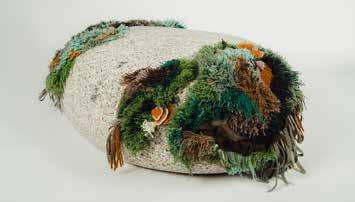
JMM Design Studio orchestrates an inspiring collection where mysticism and seduction take shape in pieces that evoke the monumentality of ancient megaliths and the organic delicacy of cork oak silhouettes. In this singular composition, Estremoz marble — noble, dense, marked by time — finds in cork a light, porous and renewable counterpart, extracted from the living skin of the montado. This encounter between stone and plant matter gives body to a dialogue
between permanence and transformation, between the ancestral past and a sustainable future. The collection thus rises as a poetic manifesto of the Alentejo landscape, revealing its mineral and natural identity, and suggesting new ways of inhabiting, interpreting and projecting the territory.
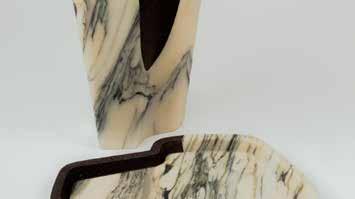
Vítor Reis Cerâmica, in Caldas da Rainha, investigates the dialogue between limestone from the Center region and red clay, in a combination that recovers and reinvents the secular traditions of Portuguese ceramics. In this telluric fusion, the fossil weight of limestone meets the warm plasticity of clay, evoking an ancestral choreography where matter and gesture intertwine. The resulting pieces become tangible testimonies of the relationship between territory and humanity — forms that, molded by fire and time, echo the history of human evolution through the art of pottery. More than objects, they are living fragments of knowledge that crosses generations, sedimenting the memory of the earth in each contour.
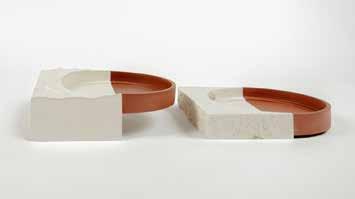
Studio Anansi draws inspiration from the landscapes of Vale do Côa to reinterpret, through design, the first artistic manifestations in Portuguese territory. Their creations establish a dialogue between
schist — stratified and silent stone, characteristic of the region — and acacia wood, organic and living matter, in a fusion that echoes the ancestral relationship between human beings and nature. The sinuous forms of the pieces evoke the figures of deer, horses and cattle engraved in rock, symbols of survival, mobility and reverence
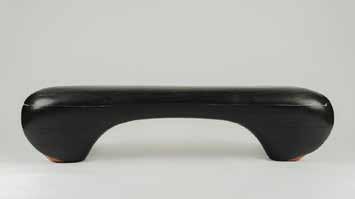
for life. In this evocation of an ancestral bestiary, Studio Anansi transforms raw matter into symbolic gesture, merging art, territory and memory in a design that looks to the past with contemporary intention.
Estúdio Eneida Lombe Tavares captures the essence of Pico Island through the dialogue between basalt and wicker, materials that translate the brute force of volcanic rocks and the flexibility of vineyards that shape the landscape. Basalt, the result of ancestral eruptions, represents the solidity and resistance of the territory, while wick-
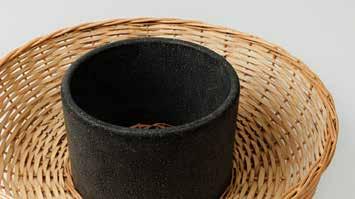
er, woven with delicacy, refers to cultivated life and the agricultural tradition of vines in stone corrals. This combination symbolizes the harmony between the natural environment and human intervention, reflecting the uniqueness of the Azorean archipelago and inspiring pieces that celebrate the identity, history and memory of Pico Island.
The BROOT project celebrates the geological and cultural diversity of Portugal by representing five distinct regions through their emblematic materials and the hands of artists committed to the artisanal and identity legacy of each territory. The "Dialogues" collection brings together a total of 25 original pieces created by five studios, each exploring the singular relationship between a pair of materials characteristic of their region:
Center-North Region: Studio Olivah (Gisella Tortoriello and Paula Sica) works with granite and burel from Serra da Estrela, symbolizing the fusion between mineral hardness and textile softness of this glacial landscape.
Alentejo: JMM Design Studio (João Marcos Moreira) explores the dialogue between Estremoz marble and cork, materializing the history and modernity of cork oak silhouettes.
Center Region: Vítor Reis Cerâmica (Vítor Reis), in Caldas da Rainha, combines limestone from the Aire and Candeeiros Mountains with red clay, evoking the secular traditions of Portuguese pottery.
North: Studio Anansi (Evan Jerry) fuses schist from Vila Nova de Foz Côa with acacia wood, drawing inspiration from the rock engravings that witness the country's first artistic expressions.
Islands: Estúdio Eneida Lombe Tavares (Eneida Lombe Tavares) incorporates basalt and wicker from Pico Island, translating the volcanic force and delicacy of vineyards that define the Azorean landscape.
Each material carries millenary stories and artisanal techniques preserved throughout generations, conferring deep cultural and technical significance to the pieces. The studios developed objects that transition between functional and decorative, offering a collection that is, in itself, a true manifesto of Portuguese identity in dialogue with the present.
The BROOT project has led Portugal to stand out at the most important international fairs of art, design and architecture, placing the country's traditions and innovation at the center of global debate. Since its debut at INDEX Saudi Arabia 2024, in Riyadh, where it conquered attention through attention to detail and the stories that involve each piece, to its presence at Maison & Objet Paris, where it was recognized as a striking example of "New Era" design, BROOT has been establishing itself as an ambassador of Portuguese culture.
At Milan Design Week, the largest and most influential design event in the world, BROOT presented itself alongside the biggest and most
prestigious global luxury brands, confirming the capacity of Portuguese design to dialogue with the most recognized names in the sector. This participation reinforced the project as a contemporary reference that combines heritage and modernity.
The presence at events like NYCxDesign underlines BROOT's commitment to promoting not only contemporary design, but also the rich Portuguese artisanal legacy, which confers depth and meaning to each creation. In Osaka, at the Portugal Pavilion of Expo 2025, the project had the honor of exhibiting five selected pieces, which represent the geological, cultural and artistic diversity of the country, evidencing the importance of bringing to the world a representative sample of the best of Portuguese design and craftsmanship.
In an era when globalization tends to homogenize cultures, the BROOT project emerges as a creative resistance — a true manifesto of Portuguese singularity. In 2025, BROOT will bring to the world more than Portuguese natural stone: it will bring with it stories, ancestral techniques and the soul of a people who have always known how to transform the richness of the earth into art.
Committed to responsible practices and conscious design, the project invests in the reuse of raw stone blocks and already extracted pieces, especially those less commercially valued. This sustainable approach not only minimizes environmental impact, but also reveals new tonalities, textures and movements of stone, giving them new life and meaning.
BROOT is much more than a design project: it is a celebration of Portuguese territory, of the hands that shape it and of the creativity that transforms it. It is proof that when ancestral traditions meet contemporary innovation, something unique, authentic and universally inspiring sprouts — a true dialogue between past and future, local and global, matter and spirit, that defines the best of Portuguese making.

ASSIMAGRA - Portuguese Association of the Mineral Resources Ind ustry
This Technical Manual edited by ASSIMAGRA represents a groundbreaking initiative by the Portuguese Association of the Mineral Resources Industry, providing the natural stone sector with its first comprehensive scientific guide covering design, dimensioning, processing, application, maintenance, and lifecycle management of natural stone products in construction. This innovative publication emerges at a critical time when Portugal stands as the seventh largest global producer of natural stone, with exports reaching €470 million in 2024, demonstrating the strategic importance of this industry to the national economy.
The manual serves as both a technical reference and a strategic tool for industry transformation, systematizing specialized knowledge that has been accumulated over decades while integrating international best practices. Its comprehensive approach addresses the growing market demand for advanced technical solutions that combine the inherent beauty of natural stone with increasingly stringent performance requirements in modern construction.
Portugal's position as the seventh largest global natural stone producer underscores the critical importance of technical excellence and innovation in maintaining competitive advantage. The industry's substantial contribution of €470 million in exports in 2024, combined with its role as a significant employer of thousands of workers, positions natural stone as a cornerstone of the Portuguese economy.
This publication emerges as a direct response to the industry's need for technical sophistication and standardization. As global markets become increasingly competitive and quality requirements more stringent, the manual provides Portuguese producers with the scientific foundation necessary to maintain and expand their market leadership.
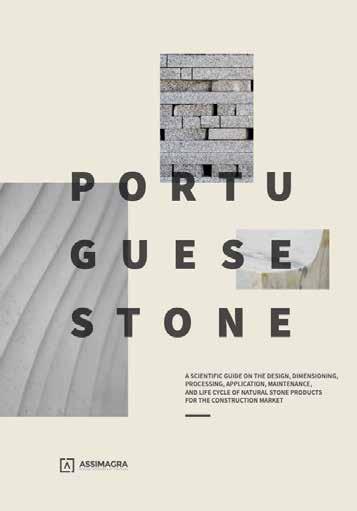
The manual's approach to sustainability and digitalization reflects the industry's recognition that future competitiveness depends not only on product quality but also on environmental responsibility and technological advancement. This forward-looking perspective ensures that Portuguese natural stone products remain relevant in markets where sustainability credentials are increasingly important.
The manual's comprehensive treatment of natural stone facade engineering represents one of its most significant contributions to industry knowledge. The section dedicated to facade applications addresses the complex interplay between aesthetic requirements and technical performance, providing detailed guidance on dimensioning, composite laminate solutions, and adherence to relevant codes and standards.
The facade engineering section responds directly to market demands for increasingly sophisticated building envelope solutions. Modern construction projects require natural stone facades that not only provide visual appeal but also meet stringent performance criteria for thermal efficiency, structural integrity, and long-term durability. The manual's systematic approach to these challenges provides designers and contractors with the tools necessary to deliver solutions that meet both aesthetic and functional requirements.
The integration of composite laminate solutions within the manual reflects the industry's evolution toward hybrid technologies that combine natural stone's inherent properties with advanced engineering materials. These solutions offer enhanced performance characteristics while maintaining the visual and tactile qualities that make natural stone desirable in high-end construction applications.
The manual's dedicated chapter on structural applications of natural stone addresses a growing area of interest within the construction industry. Natural stone's exceptional compressive strength and durability properties make it an attractive option for structural applications, particularly in projects where longevity and reduced maintenance requirements are prioritized.
The section provides detailed coverage of structural engineering concepts specific to natural stone construction, including comprehensive analysis of forces and force paths, relationship between form and structural behavior, and specialized techniques such as pre-stressing. This technical depth ensures that structural engineers have access to the specialized knowledge required for successful natural stone structural applications.
Understanding the unique characteristics of natural stone in structural applications requires specialized knowledge of how forces are transmitted through stone elements and how various constraint conditions affect structural behavior. The manual's treatment of these topics provides engineers with the technical foundation necessary for safe and efficient structural design using natural stone materials.
Chapter IV of the manual addresses standardization, quality, and certification processes that are fundamental to ensuring the international competitiveness of Portuguese natural stone products. The comprehensive coverage of international standardization frameworks, including European and national standards, provides industry participants with clear guidance on meeting global market requirements.
The section's detailed treatment of CE marking requirements and European Assessment Documents (EADs) ensures that Portuguese producers understand and can comply with the regulatory requirements necessary for accessing European markets. This compliance framework is essential for maintaining market access in an increasingly regulated global marketplace.
The manual's approach to certification processes reflects understanding that quality assurance extends beyond product characteristics to encompass entire production and supply chain processes. This comprehensive view of quality management ensures that Portuguese natural stone products can compete effectively in markets where customers demand not only high-quality products but also documented proof of quality management systems.
This publication represents more than a technical document; it constitutes a strategic tool for industry transformation and development. By providing systematic access to specialized technical knowledge, the manual enables Portuguese natural stone companies to enhance their technical capabilities and market competitiveness.
Blending international best practices with the extensive experience of the Portuguese natural stone sector, the manual serves as a unique resource that bridges global innovation with local know-how. This synergy enables companies to harness cutting-edge advancements while capitalizing on their own heritage and strengths to deliver market-leading solutions.
The manual's comprehensive scope, covering everything from basic material selection through advanced lifecycle management concepts, positions it as a foundational resource for industry development. As the natural stone sector continues to evolve in response to changing market demands and technological opportunities, the manual provides a stable technical foundation upon which further innovations can be built.
With the release of this technical manual, ASSIMAGRA sets a new benchmark for the Portuguese natural stone industry. It is the first comprehensive publication to systematize decades of accumulated
knowledge while integrating advanced international best practices. Its strategic relevance extends beyond technical application, reinforcing the long-term global competitiveness of Portuguese natural stone products.
By addressing critical areas including facade engineering, structural applications, quality assurance, and sustainability considerations, the manual provides industry participants with the tools necessary to meet evolving market demands while maintaining the aesthetic and performance qualities that distinguish natural stone as a premium construction material.
The manual's role as both a technical reference and a strategic development tool ensures its continued relevance as the industry evolves. As Portuguese natural stone companies face increasing global competition and rising performance requirements, the manual provides the technical foundation necessary for maintaining market leadership while pursuing new opportunities for growth and innovation.
Through its comprehensive approach and integration of scientific rigor with practical application guidance, this publication establishes a new standard for technical excellence in the natural stone sector, reinforcing Portugal's position as a global leader in this strategically important industry.

Ana Sofia Amaral
CTCV – Innovation and Technological Centre
The new Construction Products Regulation (CPR) - Regulation (EU) 2024/3110 was published in the Official Journal of the European Union on 18th December 2024. It partially came into force on 7th January 2025, and the new Regulation will be in force from 8th January 2026. However, given the changes it introduces, the period of coexistence with Regulation 305/2011 could be extended, at most, until 2032.
The review of the previous Regulation (EU) 305/2011 revealed significant limitations, such as poor performance in standardisation, inconsistencies with other EU legislation, ineffective enforcement actions and a lack of robust product safety criteria. Regulation (EU) 2024/3110 thus aims to modernise the legal framework for the construction sector, promoting sustainability, digitalisation and strengthening supervision and compliance.
The natural stone products sector is one of the most important geological-based industrial activities in Portugal, with a strong economic weight and significant impact on exports. With more than 2,000 active companies, spread across the extraction and processing sectors, employing around 15,000 workers, this sector is characterised by a combination of tradition and innovation. Portuguese natural stone products — such as Estremoz marble, Lioz limestone, and Vila Real granite — are widely recognised internationally, with some having been classified as ‘Heritage Stones’ due to their heritage importance. Although the sector has the technical expertise and product quality to ensure competitiveness in international markets, it faces growing challenges in the current context. Environmental requirements, production traceability, process digitisation and technical compliance with EU regulations require management and control systems to be updated. In this sense, the publication of the new Regulation (EU) 2024/3110 emerges as a regulatory milestone with a major impact, with direct implications for the information (characterisation of functional and environmental performance) accompanying the product in the marketing of natural stone on European market.
CPR 2024/3110 introduces mandatory assessment of the environmental performance of construction products based on their life cycle. This approach is part of a circular economy logic and focuses on the need to reduce the environmental impact of products, to promote the efficient use of natural resources, encouraging the reuse and recycling of materials.
One of the new features of the new Construction Products Regulation is the introduction of a new assessment and verification system, the System 3+, Notified body’s control of environmental sustainability assessment, dedicated to monitoring environmental sustainability assessments. The manufacturer shall be responsible for collecting data, assumptions and modelling in order to issue a report that will subsequently be validated by the notified body after analysis.
The System 3+ will be applied across the board to all products, regardless of their function in the construction project. Construction products, in accordance with the requirements for their use in the project, already had an evaluation and verification system in place: Systems 1, 1+, 2+,3 e 4, which will now exist in parallel with System 3+ for assessing environmental performance/sustainability.
The harmonised standards for natural stone products define, in Annex ZA, the applicability of System 4, which only requires the manufacturer's intervention.
To ensure compliance with harmonised standards, natural stone products must undergo a series of initial type tests (laboratory tests carried out on a representative sample of the product to verify that it complies with the essential requirements set out in the applicable harmonised standards), that assess the technical and physical performance of the material.
Harmonised specifications for natural stone CE marking:
Standard Product
EN 1341
Slabs of natural stone for external paving - Requirements and test methods
EN 1342 Setts of natural stone for external paving - Requirements and test methods
EN 1343 Kerbs of natural stone for external paving - Requirements and test method
EN 1469 Natural stone products - Slabs for cladding – Requirements
EN 12057 Natural stone products - Modular tiles – Requirements
EN 12058 Natural stone products - Slabs for floors and stairs – Requirement
EN 771-6
EN 12326-1
Specification for masonry units - Part 6: Natural stone masonry units
State and stone products for discontinuous roofing and external cladding.
Part 1 – Specifications for slate and carbonate slate
EN 15285 Agglomerated stone - Modular tiles for flooring and stairs (internal and external)
EN 15286 Agglomerated stone – Slabs and tiles for wall finishes (internal and external)
These tests are necessary for the issuance of the Declaration of Performance and Conformity, which must contain the essential characteristics defined in Annex ZA of the specification standard.
Some Initial Type Tests for natural stone products:
Essay
Flexural strength
Compressive strength
Resistance to abrasion wear
Slip resistance
Apparent density and open porosity
Water absorption at atmospheric pressure
Resistance to freezing and thawing
Petrographic description
Thermal shock resistance
Objective
Assess mechanical resistance to tensile/flexural stresses, especially in slabs or panels
Quantify compressive load-bearing capacity (structural elements)
Determine friction and wear resistance on pavements
Assess slip resistance performance on indoor and outdoor flooring
Determine the relationship between mass and volume occupied and the porosity of the material.
Measuring porosity and moisture behaviour
Simulate extreme climate variations and assess dimensional and physical changes
Characterise the mineral composition and internal structure of natural stone
Assess resistance to sudden temperature changes
In addition, in order to affix the CE marking, the manufacturer must implement Factory Production Control, a system that should consist of internal production control procedures, results of the tests carried out during FPC and must demonstrate that products placed on the market comply with the specification standards and the values declared by the manufacturer. Companies in the natural stone sector must implement robust Factory Production Control systems that ensure the inspection and control of raw materials, products in the manufacturing process and final products, and the traceability of materials through systematic production records. Companies must prepare themselves to integrate new digital methodologies that incorporate digitised documentation and interoperable systems, which provide operational and technical support for the sector's evolution towards digitisation.
The Declaration of Performance (introduced by Regulation 305/2011) evolves, with the new Regulation, into a Declaration of Performance and Conformity, with a standard model defined in Annex V of the document. In addition to the technical aspects and information previously covered, the Declaration of Performance and Conformity will include data on the product's life cycle and environmental performance, in the form of declared indicators, which will be introduced in stages, with targets in 2026, 2030 and 2032, depending on the updating and publication of harmonised standards.
Annex II of the new Regulation defines the essential environmental characteristics related to product life cycle analysis, in line with the guidelines of standard EN 15804+A2, used for the preparation of Environmental Product Declarations (EPDs):
(a) climate change effects – total; (b) climate change effects – fossil fuels; (c) climate change effects – biogenic; (d) climate change effects – land use and land use change; (e) ozone depletion; (f) acidification potential; (g) eutrophication aquatic freshwater; (h) eutrophication aquatic marine; (i) eutrophication terrestrial; (j) photochemical ozone; (k) abiotic depletion – minerals, metals; (l) abiotic depletion – fossil fuels; (m) water use; (n) particulate matter; (o) ionising radiation, human health; (p) eco-toxicity, freshwater; (q) human toxicity, cancer; (r) human toxicity, non-cancer; (s) land use related impacts.
These indicators will enable the impact of a given natural stone product to be assessed throughout its life cycle, ensuring transparency and enabling comparability between suppliers.
When providing the Declaration of Performance and Conformity, the manufacturer assumes responsibility for the product's conformity with the declared performance.
If necessary, the Declaration of Performance and Conformity must contain information about the presence of hazardous substances in
the construction product, namely those identified in Regulation (EC) No. 1907/2006 concerning the registration, evaluation, authorisation and restriction of chemicals (REACH).
To ensure technical and regulatory consistency, a programme to review harmonised standards is underway, led by groups of experts designated as Acquis Groups. The revision of harmonised standards aims to introduce environmental characteristics (consistent with EN 15804 – Environmental Product Declarations and cPCR – complementary Product Category Rules), updates in line with technological advances and greater adaptability to market needs. Given the extensive list of harmonised standards, it was decided to prioritise the products on the list of product families set out in Annex VII to the Regulation.
Ten priority product families have been defined, for which the revision of harmonised standards is already underway and will be published at a later date. The standards relating to the remaining 26 families will be reviewed at a later date. Natural stone products can be included in code family 21 – Interior and exterior finishes for walls and ceilings, whose harmonised standards will be reviewed after the priority products.
The digital transition is one of the strategic pillars of the new Regulation. In this context, the introduction of the Digital Product Passport (DPP) stands out as a mandatory tool for identification, documentation and digital sharing of information about each product.
A delegated act with detailed information on the DPP is expected to
be published in mid-2026. Meanwhile, it is considered that the content of the DPP should include the Declaration of Performance and Conformity, and information about the origin of materials and components, health and safety requirements, instructions for use and environmental impacts according to the defined categories, among others.
The DPP, provided for in Article 76 of the Regulation, shall be mandatory 18 months after the publication of the corresponding delegated act. It will be a key tool in building interoperable databases that can be integrated with tools such as BIM (Building Information Modelling) which are essential for strengthening product traceability and value chain transparency.
Article 83 of the new CPR establishes binding conditions for Member States in the adoption of mandatory environmental criteria in public procurement procedures, whose selection criteria must incorporate minimum environmental sustainability criteria applicable to technical specifications, supplier selection criteria and tender award rules.
This obligation can represent a competitive advantage for natural stone companies that adopt rigorous environmental practices and provide the required technical and environmental documentation, enabling them to participate in sustainable and environmentally friendly public works projects.
CPR 2024/3110 reinforces the European market surveillance framework, in conjunction with Regulation (EU) 2019/1020, by strength-
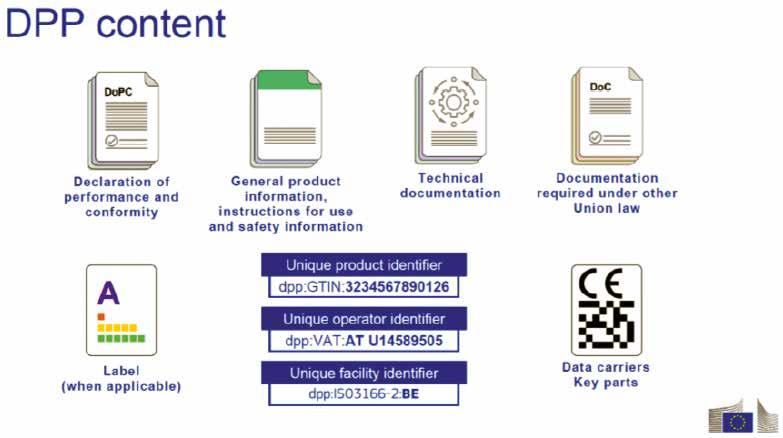
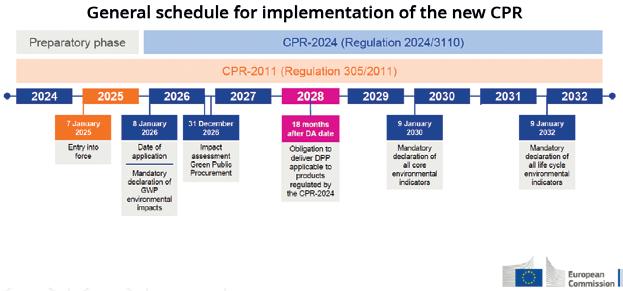
ening the powers of the competent authorities, harmonisation of complaint and sanction mechanisms, improved inter-institutional coordination and enforcement practices, the creation of portals for consumers and professionals and increased control over the circulation of non-compliant products.
Manufacturers, importers and distributors now have additional obligations with regard to verifying the conformity of their products, correct product identification and information provided in the Declaration of Performance and Conformity.
Regulation (EU) 2024/3110 is a new European benchmark for construction products, responding to the current priorities of the European Union: promotion of sustainable practices, circular economy, digital innovation and consumer protection. The natural stone sector, due to its tradition, aesthetic value and potential for durability, can take advantage of these changes, viewing them as a step towards innovation and differentiation within the sector. To do so, it must ensure compliance with new environmental requirements, adopt effective digital tools, and strengthen its internal quality management/ production control systems in the factory. Modernisation is therefore not only a regulatory requirement, but also a lever for strengthening the sector's competitiveness in European and global markets.
REGULATION (EU) 2024/3110 of the EUROPEAN PARLIAMENT and of the COUNCIL of 27 November 2024 – Construction Products Regulation.
Chapter I – General Provisions (Article 10º)
Chapter II – Procedures, Declarations and Markings (Article 15º)
Chapter III – Obligations and Rights of Economic Operators (Article 22º)
Chapter VIII – Market Surveillance and Safeguard Procedures (Articles 63º a 68º)
Chapter X – Digital Product Passport (Articles 75º a 80º)
Chapter XII – Incentives and Public Procurement (Article 63º) Annexs II, III, V, VII and IX.
REGULATION (EU) 2024/1781 of the EUROPEAN PARLIAMENT and of the COUNCIL of 13 June 2024 - Regulation on the Eco-design of Sustainable Products.
EN 15804:2012+A2:2019+AC - Sustainability of construction worksEnvironmental product declarations - Core rules for the product category of construction products.
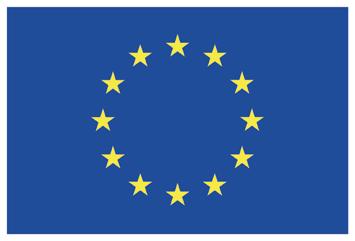
Pedro Oliveira CTCV – Innovation and Technological Centre
The Architecture, Engineering and Construction (AEC) industry is undergoing a significant paradigm shift, leading to profound changes in its methods of organisation and execution. This transformation is driven by increasing digitalisation, stricter environmental and sustainability requirements and a rapidly evolving global economic landscape. As a result, the AEC sector is reinventing itself, incorporating concepts and methodologies that prioritise efficiency, transparency and technological innovation. In this context, Building Information Modelling (BIM) has emerged as a key player, revolutionising the way projects are conceived, planned, executed and maintained. The natural stone sector in Portugal, with its strong historical roots and traditional skills, has built up an international reputation for excellence, particularly for its high-quality marble, limestone and granite from various regions of the country. Traditionally dependent on conventional methods of extraction, processing and export, the sector is now facing unprecedented challenges, both at home and abroad. On the one hand, growing international competition, especially from Asian markets, along with constant fluctuations in energy and logistics costs, is leading to a strategic re-evaluation. On the other hand, the pressure to innovate processes and products, coupled with the demand for personalised and aesthetically unique solutions, requires a change in traditional practices. Thus, the strategic adoption of the BIM methodology is not just a modern trend; it is an essential and irreversible path towards guaranteeing a sustainable, efficient and globally competitive future for the Portuguese natural stone sector.
Portugal has been consolidating its position as a world power in the production and export of natural stone. With a range of geological resources of excellence, namely marble from the Alentejo, granite from the North and Centre and limestone from the Central Region, the country reached an annual export volume of over 488 million euros in 2023 (source: Assimagra), making it one of the world's top seven exporters. In recent decades, Portuguese companies have conquered diversified markets that value the authenticity and uniqueness of the Portuguese product - be it for the beauty of the material, its physical resistance or its prestige in architecture and global design.
However, the sector is facing a strategic crossroads. Externally, there are clear threats from global oversupply, with aggressive pricing policies from emerging countries altering established commercial dynamics. Internally, sustainability challenges are growing: legal requirements regarding carbon emissions, energy consumption and efficient resource management are increasingly decisive in order to obtain essential certifications for export and acceptance in international reference projects.
In addition, the type of company - predominantly family-run SMEsemphasises the fragmentation of the sector, making it difficult to implement integrated collaborative processes and shared investment in innovation.
The digital revolution is no longer a future trend, but a present requirement. The construction sector is experiencing the transition from the era of two-dimensional technical drawing (CAD) to three-dimensional and multidimensional digital representations (BIM), capable of integrating multiple technical aspects into a single digital model. This evolution is largely supported by European policies, with the European Union promoting the digitalisation of the sector as a key driver for competitiveness and sustainability.
BIM goes beyond 3D, making it possible to virtually simulate all phases of the asset life cycle (from design to demolition), analyse performance, make informed decisions in real time, create digital libraries of components, budget and plan accurately, and facilitate communication and collaboration between all the players involved. Digitalisation therefore implies not only a technological but also a cultural transformation, requiring new skills, mindsets open to collaboration and sector integration, as well as the abandonment of fragmented and repetitive practices.
Despite the advantages, the digital transition poses additional challenges for the natural stone sector, given the specificity of the product: each block, each piece, each finish is often unique, reflecting the intrinsic variability of nature. This singular character is both an asset (in terms of aesthetic differentiation) and an obstacle (due to the difficulty

in standardising processes and creating universal parametric libraries).
Building Information Modelling involves the design, construction, operation and maintenance of buildings or infrastructures through shared parametric digital models. BIM is more than just a "3D project", it integrates detailed, multidimensional information, including geometry, material properties, costs, timetables (4D), energy and environmental analyses (5D and 6D) and maintenance data (7D).
Its basic principles include:
• Centralisation of data: All stakeholders work from a single digital model, minimising errors and rework, promoting more informed and realistic decision-making.
• Multi-stakeholder collaboration: Promotes the simultaneous contribution of various inputs (architects, engineers, builders, manufacturers, owners, etc.) in a shared virtual environment, anticipating possible problems and simplifying technical changes.
• Interoperability: The use of standardised formats (e.g. IFCIndustry Foundation Classes) ensures that information can be

transferred between software and phases without loss or error.
• Comprehensive lifecycle management: The model tracks the entire process in real time, from the preliminary study phase to the end of the asset's life, recording all relevant changes.
• Analysis and Automation: Allows for simulations, budget automation, environmental impact forecasting, advanced logistics management, predictive maintenance analysis, among others.
Despite its transformative potential, the application of BIM in the natural stone sector faces specific challenges, namely due to:
• Material variability: Natural stone has unique variations in colour, texture and pattern, making parametric modelling and the creation of generalisable digital objects complex.
• Made-to-measure production: Much of the production is customised, requiring flexible models that accommodate client specificities, unique cuts and varied finishes.
• Integration of the logistics chain: The transport and packaging of stone requires meticulous coordination to avoid damage, optimise loads and plan routes - which means incorporating these parameters into digital modelling, allowing for complete traceability.
• Sustainability pressure: Ensuring traceability from the quarry to the delivery of the final product requires integrating environmental information, calculating carbon footprints and supporting circular economy practices.
To meet these challenges, it is necessary to invest in technology, train specialised teams, develop open digital libraries and strengthen collaboration between companies and sectoral and standardisation bodies.
By overcoming these barriers, the natural stone sector can enjoy significant benefits from the strategic adoption of BIM, including:
• Optimisation of planning and execution: Precise digital models allow solutions to be previewed, facilitating compatibility between construction systems, the dimensional adjustment of parts and the preview of the aesthetic result in the final building. This approach leads to the optimisation of production processes, a reduction in cutting errors, maximising the use of raw materials and reducing waste.
• Waste reduction: Integration with CAM systems optimises the use of blocks, reducing material waste and costs. BIM allows surplus materials to be identified and reused, directing waste to other construction applications and thus contributing to the circular economy.
• Performance simulation: Models predict structural, thermal and acoustic performance, as well as environmental impacts,
increasing competitiveness in the face of increasingly stringent international requirements.
• Life cycle assessment and sustainable design: The BIM model, updated in real time, makes it easier to analyse the life cycle of materials, from extraction to application and maintenance, making it possible to choose natural stone solutions that have a lower environmental footprint over time.
• Maintenance Management: By making all the information about the stone elements available in the BIM model (location, type, supplier, care instructions), the methodology facilitates future maintenance, removal, adaptation or replacement interventions. This extends the useful life of the stone solutions and helps to reduce operating costs in the long term.
• Development of digital catalogues: Manufacturers and associations can create shared libraries, making technical specifications available and allowing different alternatives to be designed in various projects. The development of these BIM libraries serve as an important marketing tools, boosting companies external visibility.
• Corporate Social Responsibility: By facilitating the quantification of sustainability indicators, BIM increases transparency for the public and contributes to corporate social responsibility - an aspect increasingly valued by global investors and consumers.
The spread of BIM in Portugal, although growing, is still far from the maturity seen in other European sectors or countries. Some pioneering companies and large construction groups have already digitised their operations, incorporating BIM into emblematic projects, particularly in public works and international markets.
Decree-Law 10/2024 makes it compulsory to use BIM in all public projects from 2030 onwards, and it is expected that this milestone will drive the adoption of the methodology across the board, especially in terms of the creation and integration of national parametric digital libraries, the training of technicians and regulatory alignment.
To accelerate BIM maturity in the national natural stone sector, several integrated strategies can be adopted, as supported by recent Portuguese projects and studies:
- Develop interoperable national parametric libraries encompassing various types of national stone.
- Intensify training programmes for designers, processors and factory operators.
- Invest in cloud collaboration platforms that comply with international standards.
- Strengthen cross-sector and international alliances to adopt best practices worldwide and transfer knowledge effectively.
- Update legislation to clarify the requirements and details of BIM modelling, simplifying the auditing and validation processes.
The bimodal transition between tradition and innovation is now essential for the Portuguese natural stone sector. BIM is proving to be a catalyst for this transformation, providing tools and processes that effectively respond to the growing international demands for sustainability, digitalisation and collaboration. By investing in the integrated adoption of BIM, companies can position themselves to lead a new wave of growth, distinguishing Portuguese products through excellence, transparency and efficiency. As a result, the future of the sector will be more sustainable, competitive and digital, with BIM serving as the cornerstone of this coming era.
Eastman, C., Sacks, R., Lee, G. & Teicholz, Paul. (2018). BIM Handbook: A Guide to Building Information Modeling for Owners, Designers, Engineers, Contractors, and Facility Managers (3rd ed.). New Jersey: Wiley.
Pereira, Rodrigo. (2024). Information model-based platform for the supply chain of natural stones. Coimbra.
Decree-Law No. 10/2024, of January 8.
Law No. 50/2023, of August 28.
ISO 19650-1: 2018, “Organization of information about construction works — Information management using building information Modelling — Part 1: Concepts and principles”, International Organization for Standardization (ISO), 2018.
“BIM Report and the Digitalization of Construction and Infrastructure”. Retrieved from BIM e a Digitalização da Construção e das Infraestruturas - COTEC Portugal.
“Europe's Digital Progress Report 2017”. Retrieved from https://digital-strategy.ec.europa.eu/pt/node/4161.
“Natural stone exports show signs of recovery”. Retrieved from https://assimagra.pt/exportacoes/.
“Portugal is the world's 7th largest producer of natural stone”. Retrieved from https://www.compete2030.gov.pt/comunicacao/portugal-e-o-7o-maior-produtor-mundial-de-pedra-natural/.
“The (un)known potential of Portuguese stone”. Retrieved from https://www.ccip.pt/pt/newsletter-internacional/2168-o-potencial-des-conhecido-da-pedra-portuguesa.
Helena Teixeira
CTCV – Innovation and Technological Centre
CTCV – Ceramics and Glass Technology Center is a national reference entity in promoting innovation, technological development and quality in the ceramics and glass sectors. Recognized as a Sector Standardization Organization (ONS) by the Portuguese Quality Institute (IPQ) since 2016, CTCV plays a fundamental role in the development, adoption and dissemination of technical standards, both nationally and internationally, contributing to the competitiveness and sustainability of these sectors.
Its active participation in national, European (CEN) and international (ISO) Technical Standardization Commissions covers topics such as environmental management, life cycle analysis and construction materials, ensuring that standards reflect best practices and technical requirements demanded by the global market.
Standardization is the activity that encompasses the development, publication, and implementation of standards and other normative documents.
Sectoral Standardization Bodies (ONS) are entities officially recognized by the IPQ to develop technical standardization activities in a specific sector, under the coordination of the IPQ itself. Each ONS is responsible for the development, review, and cancellation of Portuguese Standards (NP) in that sector.
In turn, technical committees are structures created by the ONS to develop Portuguese standards on specific topics. They are composed of experts and representatives of various stakeholders. Whenever the ONS identifies a technical area requiring standardization, it proposes the creation of a Technical Committee (TC) to the IPQ, inviting representatives from various relevant interests, such as industry, universities, public agencies, and certification bodies. TCs, in addition to developing draft standards based on consensus among participants, can also adopt international standards (ISO, IEC, CEN, CENELEC, etc.) as Portuguese standards. Draft standards undergo a public inquiry
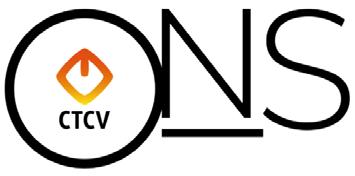
phase, allowing any interested party to submit comments. After analysing the contributions, the final version is validated and published as a Portuguese Standard (NP).
Standardization is the activity aimed at establishing, in the face of real or potential problems, provisions for common and repeated use, with the aim of achieving the optimal level of order in a given context. In practice, it consists of the formulation, publication, and implementation of standards, which are documents established by consensus and approved by recognized bodies, defining rules, guidelines, or characteristics for products, processes, or services.
In the business or industrial context, standardization ensures that products and services adhere to quality, safety, and performance standards, facilitating competitiveness, innovation, and the adoption of new technologies.
2.1. Main purpose of the Technical Committees monitored by CTCV:
The technical expertise of CTCV, as an ONS, focuses on areas related
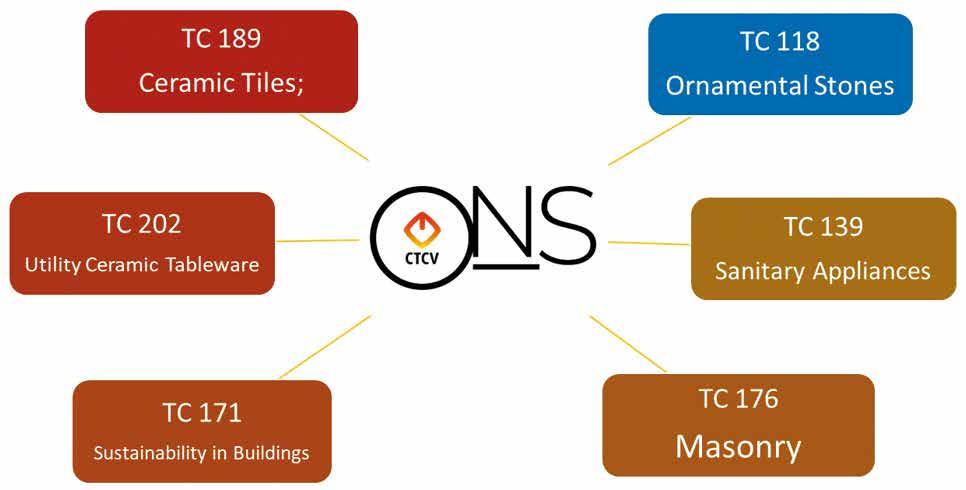
to ceramics, including structural ceramics and technical and functional ceramics; glass, such as flat glass (e.g., construction glass); glass for packaging and technical glass (e.g., laboratory, optical, and automotive glass); associated construction materials such as refractory products, clays and ceramic raw materials; and thermal and acoustic insulation products related to ceramics and glass.
CTCV coordinates six technical committees, TC 118 – Ornamental Stones; TC 139 – Sanitary Appliances; CT 171 – Sustainability in Buildings; TC 176 – Masonry; TC 189 – Ceramic Tiles; and TC 202 – Utility Ceramic Tableware. These technical committees may be organized into subcommittees and working groups, depending on the scope and program of activities. Participation is voluntary and open to interested entities, aiming for a balanced representation of those involved.
The scope of TC 118 is "Standardization in the field of natural stones, including terminology, classification and specification of blocks, semi-finished and finished products, sampling methods, methods for conducting tests, and specifications for product installation. Natural and synthetic aggregates and materials used in roads are excluded from the scope."
TC 118 was established in 1991, when the European Committee for Standardization (ECS) was taking its first steps toward developing standards for natural stone.
CEVALOR - the Technological Center for the Use and Valorisation of Ornamental and Industrial Rocks, as the Sectoral Standardization Organization (ONS), coordinated the activities of this technical committee from its constitution until 2012.

The activities of this technical committee were suspended for five years due to CEVALOR's insolvency proceedings. Despite this setback, TC 118 resumed operations in 2018, under the coordination of ONS_CTCV - Ceramics and Glass Technology Center. Nowadays this technical committee has a remarkable record of 20 entities represented and 44 members.
Currently, TC 118 monitors the normative activity of the following European and international technical commissions: CEN/TC 246 –Natural Stones, ISO/TC 327 – Natural Stones and ISO/TC 328 – Engineered Stones.
Being part of a technical standards committee in Portugal offers several benefits, both for professionals and the entities they represent. For professionals, participation provides early access to technical information, as they have direct contact with the content of standards still in development. This allows them to learn about technological trends, regulatory requirements, and international practices that will influence the sector. Furthermore, involvement contributes to technical and professional development, as it allows the exchange of knowledge with national and international experts in a highly qualified environment. Another significant benefit is the recognition and prestige gained, as participation in standards activities is valued as an important technical contribution and strengthens the professional's reputation in the market.
From the perspective of entities – such as companies, associations, universities, or technology centers – membership in technical committees allows them to directly influence the content of standards. This allows them to defend the organization's technical and commercial interests, shaping standards that will have a direct impact on their products, services, or processes. The entity also gains the ability to anticipate legal and market requirements, preparing before the publication of standards and avoiding last-minute adaptation costs. Another important aspect is alignment with international markets, especially through participation in European and international standardization, which is essential for companies that export. This participation also reinforces the entity's institutional image, demonstrating a commitment to quality, innovation, and technical responsibility.
In addition to these aspects, participation in technical committees allows for the creation and strengthening of networks (networking) with other experts, offers opportunities to influence public policy through standardization, and provides a continuous means of updating and technical training through discussions held at meetings. Therefore, membership in a technical committee is a strategic way to monitor and contribute to the technical and regulatory development of the sector in which one operates.
IPQ – Instituto Português da Qualidade ISOlutions Portal
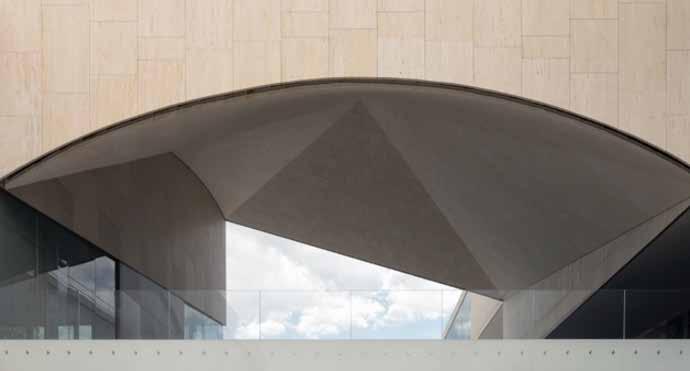
Marisa Almeida, Milene Lopes, Anabela Amado, Sofia Ferreira e P edro Frade
CTCV – Innovation and Technological Centre
Sustainability has become a defining priority across industries, particularly in construction, where material choices play a crucial role in environmental performance. In this context, Environmental Product Declarations (EPDs) – known in Portuguese as Declarações Ambientais de Produto (DAP) – are emerging as essential tools for transparency, comparability, and continuous improvement.
A recent tutorial developed by CTCV, at the request of Assimagra (the Portuguese Association for Mineral Resources) highlights the methodology, standards, and tools for implementing EPDs in the natural stone sector. This article synthesizes its key messages, exploring both the technical aspects of life cycle assessment (LCA) and the evolving regulatory landscape, including the construction products regulation and the forthcoming Digital Product Passport (DPP).
An EPD is a Type III environmental declaration, compliant with ISO 14025 (Environmental labels and declarations – Type III environmental declarations – Principles and procedures), that provides quantified, verified, and transparent information about a product’s environmental impacts across its life cycle. Equivalent terms exist in other contexts, such as FDES (France) or simply EPD (international use).
EPDs present quantified environmental information about the life cycle of a product (following the ISO 14040 and ISO 14044 methodology), to allow comparisons between products that perform the same function, which are beginning to assume a very relevant nature in supplier-client communication, given society's growing sustainability demands.
To calculate environmental performance, there are several reference standards for its preparation depending on the specific requirements of each program operator.
Key features include:
• Based on life cycle assessment (LCA) according to ISO 14040/14044 and EN15804+A2.
• Developed using product category rules (PCRs/RCPs) that ensure comparability within product families.
• Validated by an independent third-party verifier before registration.
• Primarily designed for B2B communication, though increasingly relevant in B2C markets.
• Enable architects, engineers, and clients to make evidence-based material choices, while also supporting manufacturers in continuous environmental improvement, reflecting indicators such as climate change, acidification, eutrophication, resource depletion.
The central goals of EPDs are to:
• Communicate environmental performance in a clear and transparent manner.
• Encourage demand for lower-impact products.
• Provide multi-criteria information that covers a product’s entire useful life.
• Support regulatory compliance and alignment with green building certification schemes (e.g., BREEAM, LEED).
• Empower companies to differentiate competitively through verified sustainability credentials.
EPD development follows a robust set of international standards, notably:
• ISO 14025 – Type III Environmental Declarations.
• ISO 21930 – EPDs for construction products.
• EN 15804 – Product Category Rules (PCR) for construction.
• EN 15941/15942 – Data quality and reporting formats.
Supporting tools include LCA software such as SimaPro, GaBi, OpenLCA, and Athena, as well as databases of secondary environmental data.
In terms of its advantages, they can be summarized as:
• Sustainability: They help organizations identify and improve
the environmental aspects and impacts of their products throughout their life cycle.
• Eco-Marketing: Provides an effective marketing tool, demonstrating the company's commitment to sustainability.
• Requirements compliance: Helps meet customer requirements, environmental regulations, and sustainability requirements (including sustainability reporting).
• Competitiveness: Differentiates products in the market, offering a competitive advantage to companies that invest in sustainable practices, allowing access to international markets that value environmental performance.
• International Partnerships and Collaborations: Companies that invest in sustainability are seen as more attractive partners. An EPD can facilitate collaborations with other companies, NGOs, and institutions that value environmental responsibility. International partnerships can “open doors” to new markets and business opportunities.
Depending on scope, EPDs may cover different life cycle stages:
• Cradle-to-gate – from raw material extraction to final product manufacturing (only possible for intermediate products that meet special conditions according to EN 15804+A2).
• Cradle-to-gate with options – including additional selected stages (e.g., end-of-life).
• Cradle-to-grave – covering all stages, from extraction to end-oflife disposal or recycling.
For the stone sector, a declared unit often corresponds to 1 tonne of processed stone, enabling comparability across materials. For paving material, the functional unit can also be expressed as 1 m2
When the EPD includes all stages of the life cycle, such as the product stage (extraction of raw materials, their transport and production) (A1 to A3), transportation (A4), installation in the building (A5), use and maintenance (stage B) and the end-of-life stage (stage C) and the benefits beyond the life cycle (module D), the EPD is said to be "from cradle to grave" (see Figure 1) is expressed per functional unit.
The backbone of an EPD is the life cycle assessment, which quantifies environmental impacts. The process includes:
1. Goal and scope definition – establishing system boundaries and declared units.
2. Data collection – inputs (materials, energy, water) and outputs (waste, emissions).
3. Inventory analysis – compiling data for all processes involved.
4. Impact assessment – using characterization models such as EN 15804+A2; EF (environmental footprint); ReCiPe, TRACI, or IPCC.
5. Interpretation and verification – ensuring transparency and reliability.
Key impact indicators include (see Figure 2):
• Climate change potential (CO2 equivalent).
• Resource depletion (fossil and non-fossil).
• Acidification and eutrophication.
• Ozone depletion and photochemical oxidation.
• Water consumption and waste flows.
The credibility of an EPD depends heavily on data quality. Criteria
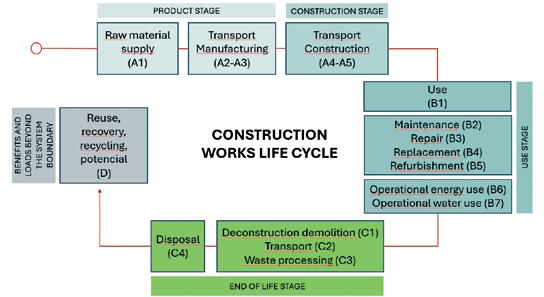

include temporal, geographic, and technological representativeness, as well as consistency, reproducibility, and uncertainty management. Verification by an independent body ensures compliance with ISO standards and enhances market trust.
EPDs must be registered in recognized programs such as ECO Platform (EU), IBU (Germany), INIES (France), Environdec (Sweden, global), and DAPhabitat (Portugal). Registration guarantees harmonization and international recognition, expanding the market value of verified declarations.
Looking ahead, the EU Ecodesign Regulation (2024/1781) introduces the Digital Product Passport, expected to roll out by 2027. This innovation will:
• Provide digital access to detailed life cycle data via QR codes or watermarks.
• Enhance traceability and transparency across the entire value chain.
• Support authorities in compliance monitoring while safeguarding confidential business data.
• Facilitate circular economy strategies by enabling better-informed consumer and professional choices.
For the construction sector, including natural stone, the DPP represents a transformative step toward digitalized sustainability reporting
The Assimagra tutorial demonstrates that Environmental Product
Declarations are not merely compliance tools but strategic instruments for sustainable growth in the stone industry and beyond. By integrating rigorous LCA methods, transparent communication, and alignment with international standards, EPDs empower manufacturers, designers, and policymakers alike.
An EPD significantly contributes to a company's internationalization by increasing credibility, facilitating compliance with regulations and customer requirements, providing competitive differentiation, improving global marketing effectiveness, increasing resilience to market changes, and reducing risks. These factors make products more attractive and accessible to global markets, promoting growth, international expansion, and sustainability.
With the forthcoming Digital Product Passport, sustainability information will become even more accessible, driving market transformation toward low-impact, resource-efficient construction materials. In this evolving landscape, companies that invest early in EPD development will be better positioned to meet regulatory requirements, achieve competitive advantage, and contribute to a more sustainable built environment.
Almeida. M. (2019). Desempenho ambiental de produtos no sector cerâmico em Portugal. Tese de doutoramento. Universidade de Aveiro
Base de dados Ecoinvent v3.9 (2022). (em www.ecoinvent.org) e software SimaPro
Declaração Ambiental de Produto (DAP) - Fator Chave de Sustentabilidade – YouTube - https://www.youtube.com/watch?v=hpysho6nj68
EN 15804:2012+A2:2019+AC - Sustentabilidade das obras de construção – Declarações ambientais de produtos – Regras de base para as categorias de produtos de construção
NP ISO 14025:2009 Rótulos e declarações ambientais – Declarações ambientais Tipo III – Princípios e procedimentos
ISO 14040:2006 – Environmental Management – Life Cycle Assessment – Principles and Framework (ISO, 2006a).
ISO 14044:2006 – Environmental Management – Life Cycle Assessment – Requirements and Guidelines (ISO, 2006b).
EN 15942:2011 Sustainability of construction works – Environmental product declarations – Communication format business-to-business

AND INNOVATION
CTCV - Technology and Innovation Centre located in Coimbra • Portugal Centre Region dedicated to technological support of construction industries, namely natural stone and mineral resources • Equipped with advanced technologies for the characterization and processing of mineral resources and natural stone • Highly qualified staff • Interface for innovation on industrial ecosystem employees 75 highly qualified + 70% customers per Year + 500 PhD 6 patents 5 spin-off company 1 technology transfer process 1 accredited laboratories 4 accredited tests + 300 tests performed each year + 15000 projects in the last 10 years + 100 R&D&i national and international partners + 100
+351 239 499 200 www.ctcv.pt | centro@ctcv.pt
- Parque Tecnológico de Coimbra
R. Alves 1* , C. Carvalho 2 , J. Carvalho 2 , A. Silva 3 , A. Magalhães 4 , P. Rebola 5 , G. Matias 6 , A. Vinagre 7 , L. Lopes 8
(1) Lab2PT – University of Minho and Mercado da Pedra Lda, *raquelmcepedaalves@gmail.com; (2) LNEG – National Laboratory for Energy and Geology, (3) CTCV – Innovation and Technological Centre; (4) ASSIMAGRA – Portuguese Association of the Mineral Resources Industry; (5) FRONTWAVE – Engenharia e Consultadoria S.A.; (6) ITECONSInstitute for Research and Technological Development in Construction; (7) DIMPOMAR - Natural Stone from Portugal and around the world Lda.; (8) UÉVORA – University of Évora and ICT – Earth Sciences Institute
Summary: The European standard EN 12440, which regulates the denomination of natural stones, is a vital strategic asset for the industry's competitiveness. However, its effectiveness has long been compromised by ambiguous criteria and a slow revision process. As the new Construction Products Regulation (CPR) and the introduction of Digital Product Passports (DPPs) make traceability and transparency mandatory, the shortcomings of the standard have become a critical liability. This paper presents a detailed analysis of EN 12440's deficiencies and, drawing on the work of a multidisciplinary technical group, outlines concrete proposals for its modernisation. The aim is to transform the standard into a robust and dynamic tool, enabling the natural stone sector to meet future regulatory, digital, and sustainability requirements.
Key words: Natural Stones, European Standard, EN 12440, Denomination Criteria, Digital Database, Traceability, Market Competitiveness.
The harmonisation of technical standards is a cornerstone of the European Union (EU), shaping its influence across materials, processes, products, and services. The denomination of natural stones is a key example where harmonisation criteria are essential, particularly for promoting market confidence and ensuring alignment with the new Construction Products Regulation (CPR) (EPC, 2024).
In 1999, to address the prevailing confusion surrounding the designa-
tion of natural stones, the CEN/TC 246 Working Group on Terminology, Classification and Characteristics initiated the development of a standard. The aim was to establish a comprehensive framework for the denomination of natural stones, offering a reference to navigate the multitude of commercial names emerging from market trends and promotional efforts. The standard also aimed to provide lists of natural stones for each EU Member State, based on established criteria.
The first version, ‘EN 12440 Natural Stones—Denomination criteria’, was published in 2000. However, its criteria were outlined in a subjective and overly concise manner, resulting in inconsistent interpretations and a lack of harmonisation in the national lists included in the annex. The standard has since undergone two revisions, with a third currently under consideration. A deadlock persists between Member States supporting a new revision and those favouring the retention of the current version.
This paper presents a detailed analysis of the EN 12440 standard, focusing on its 2017 version currently valid, in order to highlight its deficiencies and the pressing need for revision. It also offers concrete proposals for improving the denomination criteria, with the aim of enabling the standard to fully achieve its original purpose: to effectively harmonise the denomination of natural stones across the EU.
A systematic analysis was carried out on all published versions of the EN 12440 standard (2000, 2008, and 2017) to assess the evolution of
its content and criteria. The primary focus of this study was the 2017 version currently valid, with a particular emphasis on Annex A, which contains the official denomination lists submitted by each Member State (Fig. 1). To evaluate the effectiveness of the standard and its alignment with market realities, the following steps were undertaken:
• The completeness of the national lists was verified by checking whether all EU Member States had submitted their contributions and by quantifying the number of natural stone varieties in each list.
• Inconsistencies within the submitted data were identified, including repeated varieties, the use of identical commercial names for different varieties, and the omission of key denomination criteria (e.g., typical colour, petrological family, and place of origin).
• As 11 of the 34 EU Member States had not submitted their lists, a comparative analysis was carried out using two prominent digital databases to highlight the standard's relevance in the
current global market. The selected databases were chosen based on their extensive commercial entries, market relevance, regular updates, and open-access availability, as is:
• Naturstein (naturalstone-online.com/stones): A German-based global archive containing over 4,500 natural stone entries, with descriptions closely aligned with the EN 12440 criteria.
• Stone Contact (stonecontact.com): A global e-commerce platform featuring a catalogue of over 23,500 entries, classified by petrographic groups, colours, and countries.
A statistical chart was produced to visualise the disparity in natural stone entries between the EN 12440 Annex A lists and the data from these two online databases. The histogram illustrates each country’s significance as a European stone producer and its visibility in the global market, a relevance further supported by external sectoral statistics (Montani, 2023; ASSIMAGRA, 2025).


An analysis of the EN 12440 standard reveals several critical issues that undermine its effectiveness and relevance. The first issue concerns the slow pace of its revision cycle. Since its initial publication in 2000, the standard has undergone only two revisions, with substantial intervals between the 2008 and 2017 versions. This revision cadence fails to keep pace with the highly dynamic natural stone market, where new varieties are constantly introduced and others become obsolete, necessitating regular updates to remain up to date.
Furthermore, a comparative analysis across the 2000, 2008, and 2017 versions shows that while the national lists of natural stones were updated, the underlying denomination criteria have remained largely unchanged. These criteria were defined in an overly concise and subjective manner, leading to varied interpretations and a lack of harmonisation. This vagueness has resulted in widespread non-compliance by companies presenting natural stone denominations in commercial documents, including mandatory Declarations of Performance (DoP), which in turn have prompted stakeholders to question the standard's utility and even advocate for its withdrawal.
A detailed analysis of the national lists in Annex A reveals significant inconsistencies. The data indicate a marked disparity in the number of natural stone varieties presented by each country, with several EU Member States of global significance entirely absent from the lists. The study identified numerous non-conformities, including:
• Repeated varieties: 120 instances of the same variety, sometimes with identical commercial names, were identified across the 23 submitted lists.
• Inconsistent naming: 53 cases were identified where the same commercial name was applied to petrologically and/or chromatically distinct varieties.
• Omission of criteria: Essential denomination criteria were either systematically or casually omitted. For example, the petrological family were absent in 8 of 441 distinct classes. The place of origin was absent in 14 cases out of 2,100 listed locations, which included 416 quarries. Most notably, the typical colour was not specified in 135 of the 928 unique colour designations.
These non-conformities underscore the urgent need for a clearer and more objective definition of the denomination criteria, to ensure the standard can effectively achieve its intended purpose of harmonisation.
Building upon the critical analysis of the current standard, the following proposals for revision are presented to address the identified non-conformities and strategically position the EN 12440 as a robust instrument aligned with the requirements of the new Construction Products Regulation. The proposed changes aim to enhance objectivity, consistency, and usability, thereby strengthening transparency and competitiveness within the natural stone industry.
1. Protection of Commercial Names: The standard should include a disclaimer in its European foreword to protect CEN and national standardisation bodies from legal claims arising from the use of registered trademarks as natural stone commercial names.
2. Uniform Terminology: A unified terminology must be established and consistently applied throughout the standard, from the Introduction to Annex A, to eliminate ambiguity and promote a single, objective interpretation of denomination criteria.
3. Inclusion of a "Terms and Definitions" Clause: A new, dedicated clause should be introduced to provide clear and objective definitions for "natural stone" and all denomination criteria, serving as a definitive reference for industry stakeholders.
4. Alternative Names: The "Name of the natural stone" clause should be expanded to allow the inclusion of alternative commercial names, acknowledging the market realities of diverse branding and marketing strategies, both domestically and internationally.
5. Standardised Petrological Classification: The "Family/petrological group" subclause must require classification to be carried out strictly in accordance with EN 12670 and its Annex A, replacing the current proliferation of non-standardised designations.
6. Objective Colour Designation: The "Typical colour" subclause should be revised to mandate standardised observation conditions, including surface finishing. Furthermore, colour descriptions must be assigned using a normalised reference system, such as that established by the Eurolithos project, thereby eliminating vague, subjective, and excessively numerous colour names.
7. Precise Place of Origin: The "Place of origin" subclause should specify that the geographic name of the quarrying site must be provided, followed by up to three administrative territory divisions, with the country listed last. The inclusion of geographic coordinates (EPSG 4326) of the quarry centre should be mandatory, thereby avoiding references to specific companies or imprecise areas and supporting the traceability requirements of the DPP.
8. Digital and Structured Annex A: The lists in Annex A should be restructured as a digital, online, and editable table. Each row should represent a single variety, with columns dedicated to each denomination criterion. This format would enable Member States to upload their updated lists during revision cycles, ensuring the content remains current and accessible.
9. Regular Revision Cycles: The review cycle for Annex A should be set at a consistent four-year interval. This regular update schedule would align the standard with the natural dynamism of the market, ensuring that listings reflect the discovery of new stones and their commercial circulation.
10. Linguistic Consistency: In the English version of the standard, all technical terms (excluding natural stone and place names) should be presented in English, including petrological family names and colours, to ensure consistent and clear communication across all EU markets.
The analysis presented in this study demonstrates that, although the EN 12440 standard was developed with the aim of harmonising natural stone denomination, its full potential has been constrained by a lack of clarity in its criteria and a slow, inconsistent revision process. The national lists of stones provided in Annex A, while conceptually foundational, suffer from significant data disparities and non-conformities, thereby undermining the standard's authority as a reliable reference for the European market.
A key challenge for the natural stone industry is navigating the new wave of EU regulations, including the New Construction Products Regulation (CPR), the EU Taxonomy, and the forthcoming Digital Product Passports (DPPs). These directives place a strong emphasis on traceability, sustainability, and transparency. As competing construction materials, such as engineered and agglomerated stones, actively revise their own standards to meet these new imperatives, it is imperative that the natural stone sector does likewise.
The revision proposals outlined in this paper are not merely technical adjustments; they represent a strategic response to these emerging challenges. By implementing a consistent, objective, and transparent denomination framework, a modernised EN 12440 would become a key enabler for the natural stone industry. It would provide the foundational data required for the development of Digital Product Passports, facilitate compliance with environmental reporting obligations (EN 15804), and support the principles of the circular economy by providing clear, standardized information for the reuse and recycling of stone products.
In essence, a revised EN 12440 would transcend its traditional role, evolving from a static document into a dynamic, digital tool. This strategic alignment would not only resolve internal inconsistencies but also empower the EU natural stone sector to assert its authenticity, traceability, and inherent sustainability, reinforcing its competitive position in a market increasingly shaped by digital and environmental performance metrics.
For further insights into these topics, we invite you to listen to the podcast "Natural Stone: Elevating Identity in a Digital World, AI powered by NotebookLM,". It is accessible via QR code or through the following link: https://youtu.be/MD3PY5u-ulw?si=ffdyCQWPBHjCv5sf.

We would like to express our gratitude to the working group IPQ/CT 118 – Rochas Ornamentais (IPQ – Portuguese Institute for Quality), which serves as the national mirror committee to CEN/TC 246 – Nat-
ural Stones (CEN – European Committee for Standardisation), and to both technical committees for their valuable contributions.
ASSIMAGRA (2025). Dados Estatísticos - Exportações - janeiro 2025 (dados provisórios de novembro de 2024). https://assimagra.pt/ wp-content/uploads/ESTATISTICA_SECTOR_MENSAL-JAN2025.pdf.
CEN/TC 350 (2019). Sustainability of Construction Works - Environmental Product Declarations - Core Rules for the Product Category of Construction Products. EN 15804:2012+A1:2013/FprA2:2019.
Dedić, Ž.; Heldal, T.; Carvalho, J.; Cetean, V.; Martinez-Martinez, J.; Trajanova, M. & Lucarini, M. (2020). European Ornamental Stone Resources - Eurolithos case study collection. 10.13140/RG.2.2.35909.52968.
EN 12440:2000 — Natural stone - Denomination criteria. (CEN/TC 246, 2000).
EN 12440:2008 — Natural stone - Denomination criteria. (CEN/TC 246, 2008).
EN 12440:2017 — Natural stone - Denomination criteria. (CEN/TC 246, 2017).
EN 12670:2019 — Natural stone – Terminology. (CEN/TC 246, 2019).
EN 14618:2009 — Agglomerated stone - Terminology and classification. (CEN/TC 246, 2009).
EN 15804:2012+A2:2019/AC:2021 - Sustainability of construction works - Environmental product declarations - Core rules for the product category of construction products. (CEN/TC 350, 2019).
EUROLITHOS (Acedido em 30 de dezembro de 2024, em https://www. eurolithos.org/).
European Environment Agency. (2022). Building renovation: where circular economy and climate meet. Publications of the European Environment Agency. https://www.eea.europa.eu/publications/building-renovation-where-circular-economy
European Parliament and Council. (2024). Regulation (EU) 2024/3110 of the European Parliament and of the Council of 23 May 2024 laying down harmonised conditions for the marketing of construction products, amending Regulation (EU) 2019/1020 and repealing Regulation (EU) No 305/2011. Official Journal of the European Union, L, 2024/3110. https://eur-lex.europa.eu/eli/reg/2024/3110/oj
ISO/CD 19947 — Engineered stone – Terms and definitions (CEN/TC 246, 2025); (under development).
Montani, C. (2022). XXXIII World Marble and Stones Report. Aldus Casa di Edizioni in Carrara. (Retrieved December 30, 2024, from https://www.worldstonereport.com/).
Natural Stone: Elevating Identity in a Digital World, AI powered by NotebookLM [Vídeo]. (s.d.). YouTube. https://youtu.be/MD3PY5u-ulw?si=ffdyCQWPBHjCv5sf.
NATURSTEIN (Retrieved December 30, 2024, from https://www.naturalstone-online.com/).
Regulation (EU) 2020/852 of the European Parliament and of the Council of 18 June 2020 on the establishment of a framework to
facilitate sustainable investment and amending Regulation (EU) 2019/2088.
Regulation (EU) 2024/3110 of the European Parliament and of the Council of 27 November 2024 laying down harmonized rules for the marketing of construction products and repealing Regulation (EU) No 305/2011.
STONECONTACT (Retrieved December 30, 2024, from https://www. stonecontact.com/).

CTCV - Technology and Innovation Centre located in Coimbra • Portugal Centre Region dedicated to technological support of construction industries, namely natural stone and mineral resources • Equipped with advanced technologies for the characterization and processing of mineral resources and natural stone • Highly qualified staff • Interface for innovation on industrial ecosystem

EXPERTISE CENTER FOR
MINERAL RESOURCES AND NATURAL STONE TESTING LABORATORIES
INNOVATION AND DIGITAL TRANSFORMATION
SUSTAINABILITY OF MINERAL RESOURCES AND NATURAL STONE
MINERAL RESOURCES AND NATURAL STONE ACADEMY
MINERAL RESOURCES AND NATURAL STONE TESTING LABORATORIES
PETROPHYSICAL AND MECHANICAL PROPERTIES TESTS
ADVANCED MINERAL CHARACTERIZATION METHODS
CE MARKING
CEN/TC 246 – NATURAL STONES
ISO/TC 327 – NATURAL STONES
ISO/TC 328 – ENGINEERED STONES
INNOVATION AND DIGITAL TRANSFORMATION
ADDITIVE MANUFACTURING / 3D PRINTING OF NATURAL STONE MATERIALS
MULTIFUNCTIONALITIES ON NATURAL STONE PRODUCTS
INNOVATION FOR NATURAL STONE EXTRACTION AND PROCESSING TECHNOLOGIES
SUSTAINABILITY OF MINERAL RESOURCES AND NATURAL STONE
CIRCULAR ECONOMY AND INDUSTRIAL SYMBIOSES
ENVIRONMENTAL PRODUCT DECLARATIONS (EPDs)
CARBON FOOTPRINT AND LIFE CYCLE ASSESSMENT (LCA)
ENVIRONMENTAL IMPACT ASSESSMENT (EIA)
DECARBONISATION OF THE NATURAL STONE INDUSTRY
MINERAL RESOURCES AND NATURAL STONE ACADEMY
TECHNICAL SKILLS AND QUALITY
DIGITAL LITERACY
SUSTAINABILITY AND DECARBONISATION PROCESSES
OCCUPATIONAL AND HEALTH SAFETY
Hélio Jorge 1 ; Guilherme Ascensão 2 , Victor Francisco 1 ; Hugo Rodrigues 2 , Victor Ferreira 2
(1) Innovation and Development Unit, CTCV – Innovation and Technological Centre; (2) CERIS, Civil Engineering Department, University of Aveiro, Portugal
Advances in 3D technologies have led to new applications in the conservation and rehabilitation of cultural heritage. The ability to work with satellite and drone imaging, laser scanning and photogrammetric data has made it possible not only to document heritage more efficiently, but also to make information accessible to the community through new applications, such as the digital reconstruction of monuments, the digital fabrication of lost elements, the creation of interactive experiences in cultural sites and the development of elements that allow and support a visiting experience for people with physical disabilities. 3D scanning has also made it possible to observe and analyse cultural heritage with higher precision and to record information in digital formats that last over time, ensuring access for future generations. In addition to creating realistic 3D models to document historic objects, buildings and monuments, digital mapping tools can also be used as a basis for restoration and conservation work.
On the other hand, in recent years, there has been a proliferation of 3D printing technologies based on additive processes, due to the advanced level of maturity of the technology and the familiarity of market players with it. Each additive technology has its own process and characteristics, offering versatility in materials and applications.
In general, the traditional reproduction of ornamental elements is based on delicate craftsmanship or the production of moulds on the original element, which are then used for the subsequent production of replicas. These production processes are time-consuming, costly and highly dependent on the complexity of the object to be reproduced. The digital reproduction of three-dimensional objects implies greater flexibility, making it possible to produce elements of geometric complexity in shorter execution time. Another advantage of 3D printing is the possibility of editing the digital twin before production, making it possible to produce only a selected part of the element. In addition, the collection of the data necessary to create a digital model does not require direct contact with the original materials, which is of great importance for safeguarding the preservation of the
existing cultural heritage. An example that reflects this situation is the case of the Madonna di Pietranico, a terracotta statue damaged by the 2009 earthquake in Abruzzo, Italy, in which the application of 3D techniques made it possible to visualize chances of reassembling the statue pieces without the need to manipulate them, thus risking further damage [13] (Figure 1).
In terms of recovering lost elements, there is a study that developed reversible smart elements for a sculpture, demonstrating the application of advanced technologies with the implementation of a sensor in the lost elements. In situations of destruction of cultural heritage, 3D technologies can play a pivotal role in enabling faster rehabilitation and recovery of cultural heritage.
Among the various additive manufacturing processes, some have gained prominence due to their capabilities and their ability to meet the requirements of specific industrial applications. An example is extrusion-based 3D printing techniques, which involve extruding material through a nozzle, layer by layer, to create a three-dimensional object based on a digital model. There are several variations and nuances in this printing process, depending on the materials selected and the desired properties, which makes extrusion-based 3D printing techniques extremely popular. Among the process variations, it is possible to outline (i) cast deposition modelling, which is excellent for rapid prototyping, the manufacture of functional parts and the 3D printing of concept models, (ii) the 3D printing of concrete and mortars, with a huge potential for large-scale construction and rehabilitation, both on-site and off-site, and (iii) ceramic 3D printing, which allows the creation of intricate objects, often used in artistic and decorative applications.
Another example of additive processes is selective laser sintering (SLS), which uses a high-powered laser to selectively melt powder material layer by layer. Unlike extrusion-based printing techniques,
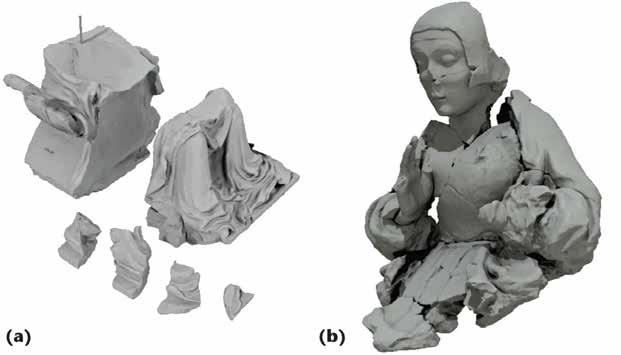
where material is deposited in a controlled manner from the bottom up as each layer solidifies and requires a base support for the printing process, in SLS the laser-heated powder material is melted and solidified, and the surrounding unmolten powder provides support during the printing process. In addition, this technique allows to obtain high-precision elements, complex geometries and functional end-use parts, which is suitable for producing parts that require high mechanical strength. Another additive process is Binder Jetting (BJ), which uses a liquid binder (e.g., water) to selectively bind reactive powders (e.g., hydraulic binder). BJ is a layer-to-layer process where a thin layer of powdery material is spread over a construction platform, where liquid agents are sprayed onto specific areas to bind the powder particles together. Among its capabilities, this technique makes it possible to produce complex shapes with pronounced protrusions, since the unreacting material serves as a support structure during the printing process. Given the several additive processes available, it is important to select a technology based on the specifications of the project, the material requirements, and the desired properties of the printed object.
Among the many opportunities that 3D technologies offer in the conservation and rehabilitation of cultural heritage, the value that cuts across all of them is access to heritage and the opportunity for the community to play a significant role in the preservation of cultural heritage. With 3D technologies, built heritage can be documented and preserved, damaged structures can be accurately restored, and replicas can be created for educational and awareness-raising purposes. The ethical issues raised highlight the need for careful reflection, collaboration and engagement with different stakeholders in the application of 3D technology to built heritage, balancing the need
of conservation, authenticity, cultural sensitivity and community involvement, which is essential to ensure the responsible use of not only this technology, but also traditional ones, since these issues are transversal to the different manufacturing techniques.
Additive manufacturing of hydraulic-based materials can play an important role in the maintenance, repair, and modernization of buildings and infrastructure. Digital mapping technologies, such as laser scanning and photogrammetry, are capable of extracting accurate and complete geometric information from buildings and construction elements, highlighting deteriorated areas. In association with additive manufacturing, these technologies can expand their immense potential in the field of cultural heritage rehabilitation, making it possible to reproduce damaged elements of historical or ornamental value. Xu, Ding, and Love [1] pioneered this field of research, combining 3D scanning with additive manufacturing for the restoration of historic structures and ornamental elements. The authors restored the pedestal of a historic stone column using cementitious mortar.
The result showed that it was possible to obtain physical properties similar to the original stone. However, the visual appearance fell short of what was desired, and further improvements are needed. The Dutch company Concr3de, which suggested the application of AM in the restoration of Notre-Dame Cathedral, replicated an iconic gargoyle found on the roof of the cathedral with a mixture of limestone and ash. The selection of the raw material was based on the


wreckage found after the fire [2]. In Spain, HOLCIM has been investigating 3DP dry mortar solutions with cement and natural hydraulic lime. According to the producer, these lime cement mortars allow for significantly higher printing speeds and can be printed vertically and directly on walls, thus being flexible and easily adaptable to the needs of any customer [3].
However, developing mortars for AM is not trivial, because in the case of extrusion technologies (Robocasting), it is necessary to ensure good workability, printability and extrudability to extrude a continuous filament of material through the printing nozzle [4]. The yield stress and plastic viscosity of the printing material must also be such as to avoid segregation, filament deformation and significant volu-
metric variations during the curing process of the printed parts.
To control printability and buildability, a high cement content is typically used in concrete/mortar for AM. Mohan et al. [5, 6] reported an average 40% increase in binder content in printable mixes compared to traditional cast concrete. Therefore, rheological requirements are a key factor when assessing the economic and environmental benefits of MA that should not be overlooked. In fact, several research groups and industrial companies have already identified this technological limitation and are studying new mixtures based on secondary raw materials [7, 8, 9]. The existing literature includes tests with industrial by-products, such as fume silica, calcareous fillers, kaolin and metakaolin [10], fly ash and blast furnace slag [11], and nanosilica [12].
Regarding the production of decorative pieces, the same technical assumptions already described apply. Examples of printed parts can be found (Figure 3), but in general, the mechanical requirements are not yet met.
References
[1] Xu, Jie, Lieyun Ding, and Peter E. D. Love. 2017. "Digital reproduction of historical building ornamental components: From 3D scanning to 3D printing". Automation in Construction 76: 85-96. https:// doi.org/10.1016/j.autcon.2017.01.010.
[2] Deezen. 2019. "Concr3de proposes using 3D printing to rebuild Notre-Dame". https://www.dezeen.com/2019/04/24/3d-printing-notre-dame-cathedralconcr3de/
[3] HOLCIM. 2020. "3D PRINTING DRY MORTAR RANGE - A FIRST FOR HOLCIM". Accessed 20 February 2022. https://www.holcim.com/lafargeholcim-spainintroduces-our-first-dry-mortar-range-3d-printing.
[4] Ma, GuoWei, Li Wang, and Yang Ju. 2017. "State-of-the-Art of 3D Printing Technology of Cementitious Material - An Emerging Technique for Construction". Science China Technological Sciences 61, no. 4: 475-95. https://doi.org/10.1007/s11431-016-9077-7.
[5] Mohan, Manu K., A. V. Rahul, Geert De Schutter, and Kim Van Tittelboom. 2021a. "Extrusion-based concrete 3D printing from a material perspective: A state-of-the-art review". Cement and Concrete Composites 115: 103855. https://doi.org/10.1016/j.cemconcomp.2020.103855.
[6] Mohan, Manu K., A. V. Rahul, Kim Van Tittelboom, and Geert De Schutter. 2021b. "Rheological and pumping behaviour of 3D printable cementitious materials with varying aggregate content". Cement
and Concrete Research 139: 106258. https://doi.org/10.1016/j.cemconres.2020.106258.
[7] Alhumayani, Hashem, Mohamed Gomaa, Veronica Soebarto, and Wassim Jabi. 2020. "Environmental Assessment of Large-Scale 3D Printing in Construction: A Comparative Study between Cob and Concrete". Journal of Cleaner Production 270: 122463. https://doi. org/10.1016/j.jclepro.2020.122463.
[8] Perrot, A., D. Rangeard, and E. Courteille. 2018. "3D Printing of Earth-Based Materials: Processing Aspects". Construction and Building Materials 172: 670- 76. https://doi.org/10.1016/j.conbuildmat.2018.04.017.
[9] WASP. 2018. "The First 3D Printed House with Earth | Gaia".
[10] Teixeira, João, Cecília O. Schaefer, Lino Maia, Bárbara Rangel, Rui Neto, and Jorge L. Alves. 2022. "Influence of Supplementary Cementitious Materials on Fresh Properties of 3D Printable Materials". Sustainability 14, no. 7. 10.3390/su14073970.
[11] Panda, Biranchi, and M. J. Tan. 2018. "Experimental Study on Mix Proportion and Fresh Properties of Fly Ash Based Geopolymer for 3D Concrete Printing". Ceramics International 44, no. 9: 10258-65. https://doi.org/10.1016/j.ceramint.2018.03.031.
[12] Mendoza Reales, Oscar A., Pedro Duda, Emílio C. C. M. Silva, Maria D. M. Paiva, and Romildo Dias Toledo Filho. 2019. "Nanosilica particles as structural buildup agents for 3D printing with Portland cement pastes". Construction and Building Materials 219: 91-100. https://doi.org/10.1016/j.conbuildmat.2019.05.174.
[13] Scopigno, R., “Sampled 3D models for Cultural Heritage: which uses beyond visualization?”, Virtual Archaeology Review, Volumen 3 Número 5. ISSN: 1989-9947, Mayo 2012.

ASSIMAGRA - Portuguese Association of the Mineral Resources Ind ustry
The Portuguese natural stone industry has established itself as one of the most dynamic and innovative at an international level, standing out for the exceptional quality of its materials and the technical and creative competence of its companies. In this context, the second edition of the StonebyPORTUGAL Awards emerges as an essential recognition of the sector's excellence, functioning as a platform for the international promotion of Portuguese stone and its productive capabilities.
More than a sectoral distinction, these awards constitute a strategic instrument for valorisation in global markets, evidencing the versatility, quality and innovation of national stone materials. By recognising projects of excellence in various categories, the awards reinforce Portugal's position as an international reference in the fields of architecture, design and construction.
The importance of the StonebyPORTUGAL Awards transcends the commercial aspect, assuming a cultural and heritage dimension. The country's geological diversity and traditional stone transformation techniques, developed over centuries, represent a heritage of enormous value. The awards contribute to preserving this heritage whilst promoting its adaptation to contemporary requirements.
Promoted by ASSIMAGRA, the StonebyPORTUGAL Awards are integrated into the Green Agenda Sustainable Stone by Portugal, financed by the PRR – Recovery and Resilience Plan. This initiative is part of a broader strategy of internationalisation and sustainable transition of the sector, which focuses on differentiation through quality, innovation and environmental responsibility.
Functioning as a powerful communication tool, the awards confer international visibility to projects that use Portuguese natural stone, which is crucial in a context where reputation and quality are determining factors for success. Simultaneously, they act as a validation mechanism for the technical and aesthetic excellence of the distinguished projects.
Another relevant aspect is their educational and formative dimension. The dissemination of award-winning projects promotes techni-

cal and aesthetic knowledge of national natural stone, contributing to informing and educating the market about its applications, advantages and differentiation. This knowledge feeds the continuous valorisation of the sector.
The structure of the awards, divided into several categories, reflects the diversity of uses and applications of natural stone, from large architectural projects to product design pieces. This comprehensive approach stimulates innovation and encourages companies to invest in research and development, promoting the sector's evolution.
The credibility of the awards is guaranteed by a jury of excellence, composed of Helder Nascimento (Espaço Arquitetura), Jorge Mealha Costa (Lisbon School of Architecture) and Fernando Brizio (Product Designer). The combination of practical, academic and creative experience ensures a rigorous and multidisciplinary evaluation, enriching the selection process and reinforcing the prestige of the distinguished projects.
The StonebyPORTUGAL Awards are structured into four distinct categories, each reflecting different domains of natural stone application and different types of technical and creative excellence. This categorical organisation allows for specific and appropriate recognition of the particularities of each application area, from large-scale architecture to the intimacy of product design.
The Architecture category is the central core of the awards, distinguishing projects that use natural stone in an exemplary manner in buildings and structures. Aesthetic and technical quality and architectural integration in the urban and landscape context are valued.
The nominated projects evidence the versatility of Portuguese natural stone and the companies' capacity to face the challenges of contemporary architecture, through distinct approaches in the application and integration of the material.
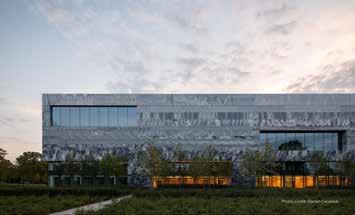
The Polish History Museum, located in Poland and executed by the Portuguese company Dimpomar, represents one of the most ambitious and technically complex projects among the nominees. Conceived by the WXCA architecture studio and situated in the Warsaw Citadel, this building constitutes a true work of architectural art where Portuguese natural stone plays a leading role.
The use of Portuguese Ruivina marble on all exterior facades and interior cladding demonstrates international confidence in the quality and technical suitability of Portuguese stone materials for large-scale projects with high technical requirements. The grey tones of Ruivina were meticulously selected to create a visual narrative that incorporates a thousand years of Polish history sculpted in Portuguese marble.
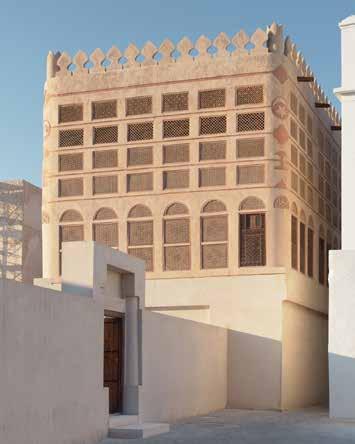
The stone chosen for the museum was Moca Creme, supplied by Frazão Rochas, an option that combines aesthetic value and technical performance with the resistance necessary to withstand the extreme conditions of the Persian Gulf climate. Its durability and stability make it especially suitable for projects in regions with large thermal amplitudes, reinforcing the competitiveness of Portuguese stone in international markets.
The Pearl Museum, located in Manama, Bahrain, and executed by Grupo Galrão, represents a singular approach to the application of natural stone in demanding cultural and climatic contexts. Designed by Studio Anne Holtrop, this building was recently included in Time magazine's list of World's Greatest Places 2024, underlining the international recognition of its distinctive architecture. The project evidences the versatility of Portuguese natural stone and its capacity to adapt to diverse geographical and cultural realities.

United Kingdom, represents one of the most prominent developments in central London in recent decades. Conceived by Eric Parry Architects, this project combines contemporary living with a historic environment, responding to the needs of the general community as well as long-term sustainability.
The use of Portuguese limestone Cabeça Veada on the facade of Phase 4 of Chelsea Barracks demonstrates the confidence of British architects and developers in the quality and suitability of Portuguese natural stone for prestigious projects in historic urban contexts. The work presents enormous friezes with phrases engraved in stone all around the building, evidencing the company's advanced technical capabilities in the field of stone engraving and customisation.

The historic recovery project of Hotel Montebelo Mosteiro de Alcobaça, executed by Solancis, represents an exemplary approach to the use of natural stone in heritage contexts of high historical and cultural value. This project, which recovers the Rachadouro Cloister, one of the wings of the monument classified as UNESCO World Heritage, was conceived by Architect Souto de Moura in collaboration with Architect Luís Peixoto. Souto de Moura's concept of "resurrecting the ancient building" was inspired by the minimalism and detachment of conventual life, cleaning the building of numerous more recent interventions and recovering the spirit that marked the property over the centuries. The use of Solancis's Branco Real and Beige Topázio stones allowed highlighting the virtuosity and quality of noble materials in perfect union with the secular roots of the building and irreproachable respect for pre-existences and the monastery's history. The intervention translated into an enormous challenge to the capacity for engineering and space adaptation. For a perfect fit of each stone in these secular walls, a three-dimensional survey was carried out throughout the work to adjust the technical drawings of each stone.
The Public Space category recognises projects that stand out for the
use of natural stone in spaces for collective use, valuing not only the technical and aesthetic quality of the application, but also its contribution to the quality of urban space and the users' experience. This category assumes relevance in the contemporary context, characterised by an increasing valorisation of public spaces as structuring elements of urban quality of life.
Fish Cube
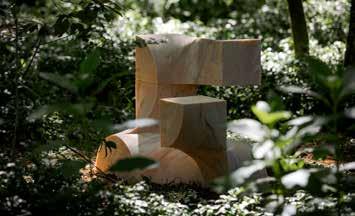
The Fish Cube project, developed by Grupo Galrão, represents an innovative and sustainable approach to the use of natural stone in public spaces. Designed by SUPERFLEX and KWY.studio and sculpted in natural stone from Galrão quarries, this project combines art and sustainability, transforming marble into a functional piece that serves as shelter for fish, promoting biodiversity and the regeneration of marine ecosystems.
Rhodes House
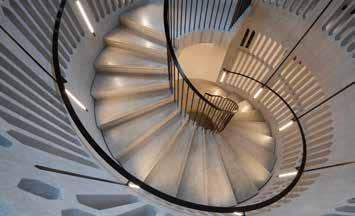
The Rhodes House project, in Oxford, United Kingdom, executed by LSI Stone, is an intervention of high technical requirement and heritage sensitivity. Inspired by Herbert Baker's original plans (1926-1928), the project introduces a staircase in Portuguese limestone Gascogne Blue, which revitalises the interior of Rhodes House, respecting the building's history and integrating harmoniously with the pre-existing stone flooring of the rotunda. The choice of this material allowed
using the steps as structural elements, eliminating the need for columns and maintaining the openness of the lower part of the rotunda.
One of the most innovative aspects was the creation of a staircase that remains permeable to light and view. The perforated pattern of the stone, inspired by the hexagonal motifs of the flooring, contributes both to visual lightness and functionality, filtering natural light. Throughout the day, the shadows projected by the sun through the windows create a dynamic play of light and shadow, conferring a poetic and deeply sensorial atmosphere to the space.
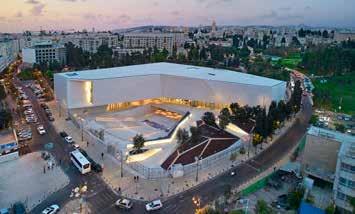
The Museum of Tolerance Jerusalem, executed by LSI Stone in Jerusalem, Israel, constitutes a testimony to the importance of learning from history and promoting a society based on understanding, empathy and respect for all individuals. Created by the Simon Wiesenthal Centre, this museum offers a unique and impactful experience to its visitors.
The use of Portuguese stones Moca Cream and Moleanos on the museum's exterior introduces an aura of refinement, leaving a deeply impactful visual impression. The interaction of textural complexities and tonal gradients of the stone confers a three-dimensional character to the facade, reinforcing its comprehensive aesthetic charm.
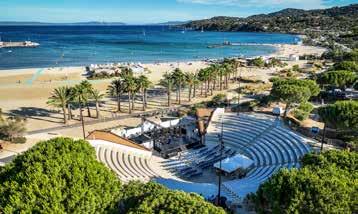
The La Traversée project, developed by Solancis and conceived by EC Architectes, in Marseille, France, represents an exemplary approach to the use of natural stone in coastal public spaces. Located on a beach in Bormes-les-Mimosas overlooking the Mediterranean, this architectural project encompasses three harmonised variants: L'Estelan amphitheatre and high and seaside green promenades.
The use of Solancis's Beige Clássico - Moleanos in this seaside project prioritised materials suitable for all-season climatic conditions, guaranteeing durability and functionality throughout the year and considering overcrowding in the summer period. The amphitheatre, highlighted as a lung and public space open to the seaside promenade, sees in Beige Clássico natural stone a key element through 115 m3 of curved, angular and milled pieces at the tops that define the romantic and timeless framing of this place.
The Innovation category recognises projects that stand out for the introduction of new technologies, processes or concepts in the use of natural stone, valuing the capacity for technical and conceptual innovation of Portuguese companies. This category assumes relevance in the current context, characterised by the need for continuous evolution and adaptation to contemporary requirements of sustainability, efficiency and functionality.
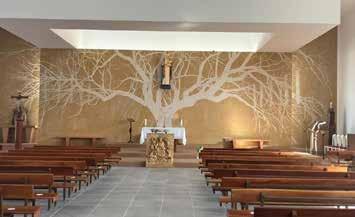
The Amarelo Negrais Tree Panel project, developed by Dimpomar for the Igreja da Charneca de Caparica and conceived by architect Sara Trindade, stands out as an innovative example of the application of natural stone in religious spaces. With an artistic tree design executed in Amarelo Negrais stone, the panel evidences the Portuguese industry's capacity to create customised solutions that combine functionality, symbolism and aesthetic expression.
This project demonstrates the versatility of Portuguese natural stone, not only through the technique used, but also through the conceptual approach that crosses religious tradition with contemporary art. The
work valorises the national lithic heritage, showing how this can be adapted to different cultural and decorative contexts, reinforcing the role of stone as a medium for artistic and spiritual communication.
Prototype Project

The Filstone Prototype Project, conceived by Jérémy Pernet and developed in Fátima, stands out as a pioneering initiative in the use of solid stone in contemporary construction. The building was designed to demonstrate the technical and architectural viability of Portuguese natural stone as the main structural element, without the need for concrete or steel reinforcements, whilst still respecting anti-seismic requirements.
The project's execution was based on three essential principles: the predominant use of natural materials, such as stone, wood and cork; maximising thermal efficiency to guarantee interior comfort; and optimising the format of blocks to reduce costs, waste and construction time. In total, 334 blocks of Creme Fátima limestone were used, assembled in just 28 days by a team of three people.
This prototype proves the versatility and potential of Portuguese natural stone as a sustainable construction solution. By investing in an innovative approach, Filstone contributes to the reinterpretation of traditional techniques with a focus on sustainability, demonstrating that stone can respond to current challenges in architecture and construction with quality and efficiency.
80 Fenchurch Street
The 80 Fenchurch Street project, developed by LSI Stone in London, represents a significant innovation in the processes of applying natural stone facades. This building, conceived by TP Bennett Architects and developed by main contractor Skanska, has 24,000 m2 of offices and residential spaces clad with Portuguese limestone Moleanos.
The main innovation of this project lies in the application of the facade through a curtain wall system developed by Focchi and manufactured by LSI Stone, which considerably reduces application time. Unlike traditional facade application, with this process approximately
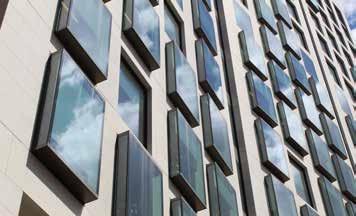
20 minutes are needed to install each unit, representing a revolution in the way natural stone facades are applied.
For the 80 Fenchurch project, more than 1,600 panels were produced to cover the entire building, with approximately 40 panels being applied to the building's facade per day.
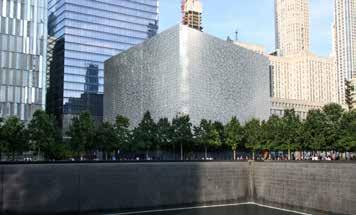
The Perelman Performing Arts Center, executed by LSI Stone in New York, is one of the most emblematic projects among the nominees, not only for its technical complexity, but also for its profound symbolism. Located in the heart of Manhattan, in the World Trade Center complex, the building was conceived by REX studio as an integral part of the reconstruction plan for the area affected by the September 11, 2001, attacks.
The building stands out for its unique facade: a 12,000 m2 cube that appears simultaneously simple, timeless and enigmatic. Clad with Portuguese pink marble with green veins, supplied by Granoguli, the project valorises national natural stone, reaffirming its quality and capacity to respond to aesthetic and symbolic requirements of high international prestige.
More than an architectural feat, the Perelman Center represents a powerful symbol of renewal and hope for the city of New York. The
presence of Portuguese natural stone in this context reinforces Portugal's role in the global value chain of construction and architecture, demonstrating how tradition, innovation and excellence can converge in projects of worldwide impact.
The Product Design category recognises projects that stand out for the creative and functional use of natural stone in the development of products and objects, valuing the capacity for innovation in design and the quality of technical execution. This category assumes significance in the context of valorising Portuguese natural stone through its application in high added-value products.
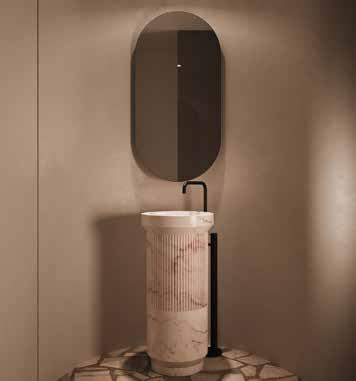
The Doric Washbasin, developed by Maami Home in Porto, represents an exemplary approach to the use of Portuguese Estremoz Pardais marble in bathroom product design. Created by Fábio Teixeira, this washbasin pays homage to the elegance of the Greek Doric architectural style, recognised as the first style of Greek classical architecture and famous for the columns of the Parthenon and the Temple of Apollo in Corinth.
The design harmoniously combines a classical concept with advanced marble cutting techniques, resulting in a washbasin that is simultaneously functional and visually captivating. Being the first cylindrical independent washbasin from Maami's Bath collection, the Doric becomes the focal point of any bathroom, thanks to its impres-
sive visual presence. Portuguese Estremoz Pardais marble, known for its warm beige tones intertwined with delicate grey and pink veins, confers a subtle and sophisticated charm to this washbasin. The linear carving contrasts with the smooth and polished finish, elevating the space's aesthetics.
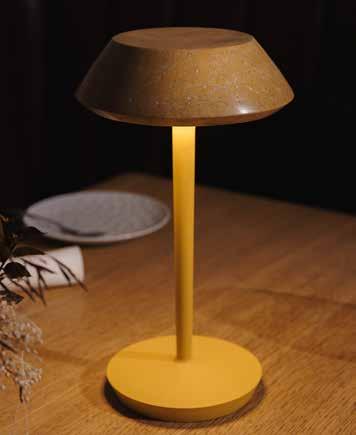
The Mini Fiore, also developed by Maami Home in Porto, represents an innovative approach to the use of Amarelo Negrais in lighting design. This lamp, created by Fábio Teixeira, was crowned with a natural stone extracted in Portugal that exhibits a unique palette, varying between light beige, vibrant yellow and deep golden tones, making each lamp truly exclusive.
The base, meticulously worked in premium aluminium, receives a yellow finish that perfectly complements the radiant stone top. The Mini Fiore was created to illuminate spaces with vibrant colours and sophisticated charm, being perfect for any environment that requires a touch of elegance, combining art and functionality.
The Stools Collection developed by Studio Olivah in Sintra, designed by Gisella Tortoriello, is composed of five sculptural stools that integrate the "Places" collection. The project is based on the reuse of small remaining blocks from extraction in Portuguese quarries and

surplus from local factories — materials that, for not meeting the uniformity and dimension standards required by the industry, are generally discarded.
Each piece was conceived to valorise the singularity and natural imperfection of stone, transforming rejected materials into design objects with aesthetic and symbolic identity. Using noble rocks such as Moca Creme and Lioz Encarnado limestones, as well as variations of Estremoz marble, the collection expands the potential of Portuguese stone, bringing it closer to new audiences and decorative contexts.
Sculpted by artisans and companies such as Vetor3, Marmofelizardo and Mármores Ferrar, with raw material from quarries such as Mármores Rosal and Mármores Galrão, the stools receive names such as Adraga, Azenha, Nazaré, Carmo and Roça. Each evokes places and memories, composing a poetic narrative that reconciles tradition, materiality and contemporary design.
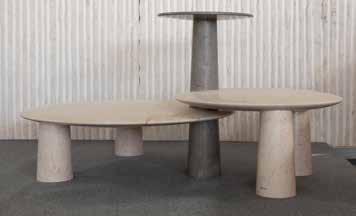
The Inverso Design project, winner of the Stone Design Awards 2022 and developed by Solancis in Alcobaça and created by designers David Amaral and Sara Saramago, proposes a conceptual approach to natural stone furniture design, challenging traditional proportions between table and stool. The piece, simultaneously functional and sculptural, starts from a concept of dynamic connection, materialised
by a central pillar that unites its components. With modular construction, it adapts to different spaces, allowing the addition or removal of modules as necessary.
The Alpinina and Estremadura Azul stones were chosen for their chromatic contrast, reinforcing the piece's visual identity. The low modules explore the richness and robustness of limestone, with details that transmit lightness through gently rounded bases. In environments such as boutiques, these modules can serve for product display, whilst the high module highlights specific elements. In lobbies or public spaces, they function as reception or interaction points.
The StonebyPORTUGAL Awards reveal the growing international affirmation of Portuguese natural stone and the national companies that transform it. Their presence in reference projects in diverse geographies demonstrates the sector's capacity to respond to technical, aesthetic and cultural requirements of great complexity, placing Portugal among the world's main exporters of high-quality construction materials.
This international projection results from decades of investment in innovation, qualification and quality control by Portuguese companies. The capacity to adapt to different contexts, combined with profound technical knowledge and the excellence of available natural resources, has allowed the sector to gain the confidence of international prescribers and integrate projects of great visibility.
The sector's internationalisation also has a strategic role in its sustainability. Market diversification allows reducing risks, taking advantage of opportunities in different regions and guaranteeing greater economic resilience. The approach to architects, designers and engineers from around the world has been essential to consolidate the reputation of Portuguese stone as the material of choice in demanding and contemporary works.
Another differentiation factor relates to the growing focus on sustainability and environmental responsibility. The sector has demonstrated innovation capacity by valorising waste, reducing wastage and promoting more conscious solutions, accompanying global trends and contributing to the ecological transition in construction and design.
The StonebyPORTUGAL Awards are, therefore, more than a recognition of merit: they are an affirmation of national excellence and an instrument of strategic promotion. Through them, Portugal reinforces its image as an innovative, sustainable and technically competent country, elevating the profile of Portuguese natural stone in the world's most demanding markets.

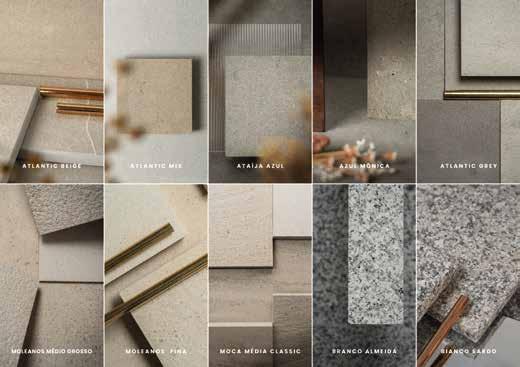
With ambitious goals for the future, we’re driven by challenges and unique projects.
Our focus on expansion to new international markets and continuous bet on technological growth and innovation is the mirror of our mission to show the beauty, potential, and versatility of natural stone.
We are a family-driven Portuguese company with generational knowledge in the extraction and transformation of limestone, granite, and marble.
We’re owners of 3 amazing quarries, in which we have access to limestone and granite. We consider it advantageous to own quarries, due to the level of control we’re able to have both in the optimization of the extraction process and the assurance of compliance with environmental norms.
Our experienced professionals along with 7500 m2 of state-of-the-art technology are our two main guarantees that any unique Designer and Architect’s special projects are going to be handled efficiently.
The continuous investment in the best technology allows us to stand out in the natural stone sector as a company of reference.
CONTACTS
Email: info@alsstones.com
Phone: (+351) 262 508 501
In an era that values authenticity and durability, natural stone stands out as much more than just a building material. Choosing the right stone, with the right finish, means understanding the context and respecting the identity of each project.
At ALS Stones, we believe that every block of stone carries within it millions of years of history. We collaborate with designers and architects who create projects with soul, those who seek, in every detail, a way to express ideas, emotions, and experiences through natural stone.
Stone has the power to transform. When thoughtfully selected, expertly crafted, and precisely applied, it becomes an integral part of a project’s identity.
It’s time to make a difference in your project!

https://agf-marmores.pt
Email: geral@agf-marmores.pt
Phone: (+351) 268 400 110

António Galego & Filhos – Mármores, S.A., was founded in the early 80s by the current administrator who began his activity in the transformation of Portuguese Ornamental Rocks, dedicating himself at that time basically to the sawing and commercialization of Natural Stones originating from the anticline of Borba, Vila Viçosa and Estremoz, destined its production only for the Portuguese market.
Its marble quarries are located in the Lagoa area, Vila Viçosa, with an exploration area of 36,000 m2, constituting an important source of raw material for the company as it represents an average annual commercial production of 3,500 m3 of blocks, due to the combination of specialized human resources and technologically advanced heavy machinery.
Characterized by a strong investment policy and sustainable growth. The company, with its headquarters in Bencatel (Vila Viçosa), has always kept pace with the evolving demands of the markets it operates in, allowing it to expand and gain significant market shares worldwide, and being able to respond in real time to the diverse specificities and demands placed by its customers and employees.

Our branches, located in Alcantarilha (Algarve), and Santo Tirso, are easily accessible and where customers have access to a vast stock of Portuguese and foreign Marble, Limestone, Silstone and Granite.
These units have a permanent stock of the most diverse national and imported materials, allowing for an appropriate and convenient choice for all types and aspects of architecture.
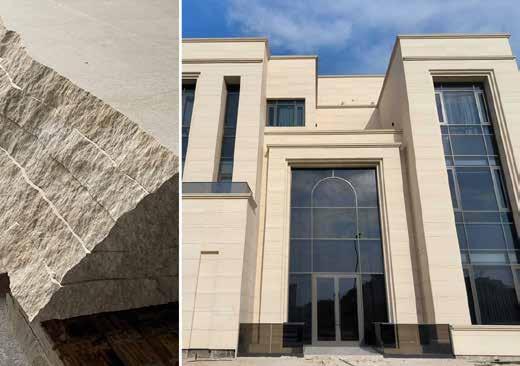
EXPORT: OVER 45
With more than 40 years of experience, C. MATA EXPORT is today a national reference in the processing and export of Portuguese natural stone.
From Portugal to the world, the company operates its own quarries in the Alcanede region, ensuring full control of the entire process, from extraction to the final product.
Our mission goes beyond stone: we aim to enhance Portugal’s natural heritage by offering technical and aesthetic solutions of excellence, with respect for the environment and a continuous commitment to innovation.
The factory, located in Casais Robustos, is equipped with state-of-theart technology that allows us to respond to complex projects, both nationally and internationally.
Storage facilities and strict verification processes guarantee the quality, safety, and traceability of each piece.
Email: cmata@cmataexport.com
Phone:
Packaging is produced with certified wood, complying with the most demanding international export standards.
With efficient logistics and personalized support, C. Mata Export ensures a complete service, from documentation to final delivery, with the highest professionalism.
Present at international trade fairs and in thousands of projects worldwide, the company stands out for its adaptability, technical rigor, and attention to every detail.
More than a supplier, C. Mata Export is a true strategic partner. Our experience, flexibility, and closeness to our clients make the difference in every project, every challenge, every achievement with Portuguese stone.

Email: geral@efamarmores.pt
Phone: (+351) 21 927 97 97
Whatsapp: (+351) 91 841 44 66
Office: Av. Marquês de Pombal, 247 2715-055 Pero-Pinheiro, Portugal
Quarry: Estrada de Bencatel, Bencatel
7160-999 Vila Viçosa, Portugal
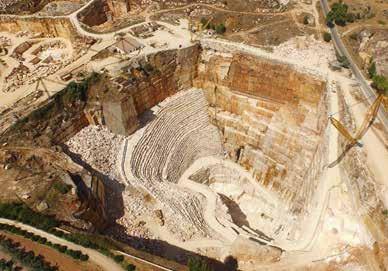
Ezequiel Francisco Alves, Lda, is a family business, founded in 1989, which has registered progressive growth and strong international recognition.
Extracts and supplies top quality white, cream and pink marble in the form of slabs or blocks.
All material is extracted from Monte D'El Rei's own quarry located in Bencatel, Vila Viçosa, Alentejo.

https://www.fafstone.pt
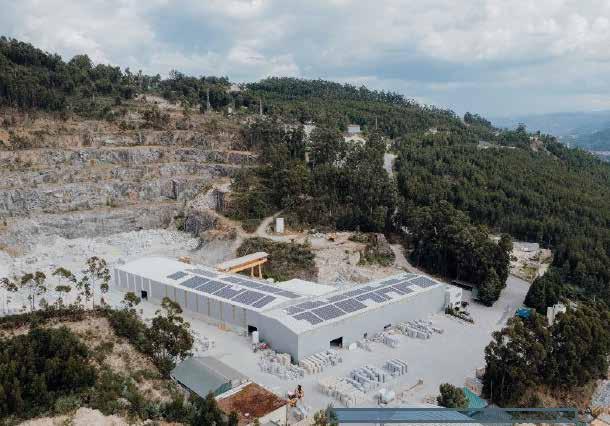
Founded in 1985, we are a family-owned company, based in Marco de Canaveses, with over 40 years of experience in the market.
We are specialized in the extraction and processing of natural stone, as well as in the production of concrete, aggregates and the sale of granite, limestone, marble, natural stone and other similar products.
We have a technical team specialized in the selection of products and raw materials. We have 2 quarries for extraction and we control the entire production process from extraction, transformation and final product.
Our production process is based on state-of-the-art technologies and an efficient energy system, without ever neglecting the protection of the environment. Integrity, Responsibility and Sustainability are some of the values that govern us.
Email: geral@fafstone.pt Phone: (+351) 255 610 376

https://www.farpedra.com
Hélder Henriques General Manager
helderhenriques@farpedra.com
Mob.: +351 962 061 392
Rui Cabeças Sales Manager ruicabecas@farpedra.com
Mob. +351 968 497 789
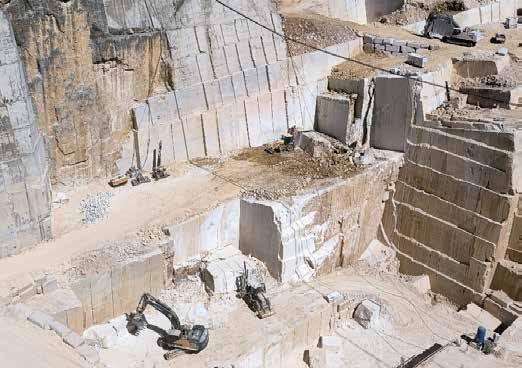
FARPEDRA – Exploração de Pedreiras is a family-owned company dedicated to the natural stone business, operating in Portugal several quarries of limestones. The company started the extraction of limestones at the end of the 1960’s with a team of brave hard workers. Nowadays FARPEDRA is the reference as the supplier of the best quality of Moleanos and Ataíja limestones.
We are also the owners of the unique Moleanos Gascogne, a very compact and low water absorption limestone, with excellent uniformity of the background color and grain. The Gascogne Beige and Blue are known worldwide both for the remarkable aesthetics and for the outstanding physical and mechanic properties.
The quality of the natural resources available in our quarries combined with our solid technical expertise and cutting-edge machinery are key factors in our activity. Our methods of work are focused to ensure that we supply each order according to the approved samples, since the first block until the last one of the order. Our quarries are mapped continuously over time and the different extraction areas are classified to ensure that we have traceability in the stone blocks that we produce.

Our clients trust in our capabilities to supply large complex projects with demanding standards, both for quality and delivery time. We have delivered natural stone for projects over 1000 m3 in constrained schedules, keeping the same standard of delivery consistently over time. We are recognized in the market as a reliable partner for our high standard of quality and timely delivery.
Rute and Hélder Henriques are the second generation of the family Farto Henriques and since 2015 they became the owners and managers of the company.
“This isn’t just a business. We feel FARPEDRA as the heritage that my father created and developed and we are now responsible to take care of the company and get it stronger in all dimensions! We feel the importance of respecting the legacy that we received and transfer it in the future to the third generation of the family!” These are the words of Hélder and Rute that have been involved in the business since their childhood.
If you have a project in Moleanos or Ataíja, please come to visit us! We will be delighted to take you to a tour in our quarries and provide you detailed information on our stones and capabilities!
https://www.figaljor.pt

FAVACO: The Art of Stone, Mastered in Portugal
In the Alentejo region of Portugal, Figaljor extracts a reliable and versatile material from its own quarry — the Favaco Granite. This dark grey granite stands out for its homogeneous texture, natural elegance, and remarkable technical performance.
Favaco has positioned itself in the stone industry offering a material that perfectly balances durability and a clean, timeless look. With low water absorption, high mechanical resistance, color stability, and versatile finishes and applications, Favaco granite is engineered to endure — making it ideal for demanding architectural and design projects.
Whether featured in modern interiors or public spaces, Favaco adapts seamlessly. It is widely used in:
• Kitchens & Bathrooms - Elegant and easy to maintain
• Interior & Exterior Flooring - Durable and slip resistant
• Facades & Wall Cladding - A timeless, architectural statement
CONTACTS
Email: info@figaljor.pt
Phone: (+351) 219 677 030
Portugal - Sintra | Leiria | Algarve
• Landscaping - Perfect for urban and natural integration
• Funerary Art - A dignified, lasting tribute
Favaco offers a broad spectrum of finishes, from the classic polished, honed, brushed, and rustic, to cutting-edge waterjet textures — allowing designers and architects to explore limitless creative possibilities.
Timeless Elegance • Enduring Strenght • 100% Portuguese
Innovation at Figaljor extends beyond stone processing. The company takes pride in operating a #greenquarry — actively reducing its carbon footprint. With over 200 solar panels powering the site and 95% of water reused in its production cycle, Figaljor proves that environmental responsibility and premium quality can go hand-in-hand.

Email: geral@filstone.com
Phone: (+351) 249 538 888
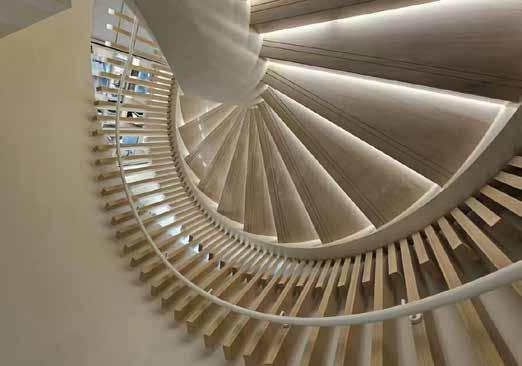
Limestone & SPI granite, from quarry to industry: consistent supply, traceable origin, and technical support for B2B partners.
Filstone is a quarry-led Portuguese supplier focused on two materials: limestone and SPI granite. We serve processors, fabricators, contractors, and public works on a B2B basis. Our portfolio covers limestone blocks and decorative wall blocks with natural “gallery” markings, aggregates obtained from stone by-products, as well as SPI granite blocks, paving cubes, and kerbs. Our priority is industrial reliability — plan-able volumes, clear specifications, and repeatable performance — enabling long-term programmes to be executed with confidence.
Extraction follows controlled plans with selective benching, and grading is performed on site to ensure uniformity by bench and lot. Each block is referenced to its layer and date to support traceability and repeatable downstream processing. Shipments are prepared in line with agreed specifications, with supporting documentation, and our team provides technical alignment on formats and tolerances.

Environmental measures include closed-loop water recirculation, dust control, and the use of electric vehicles for internal transport.
Filstone is certified under the StonePT scheme at the Excellence level, demonstrating product quality and compliance with Portuguese origin. Our aggregates are supplied with CE marking, as required for construction products in the European Union.
At Marmomac 2025, we welcome technical discussions on materials for blocks, paving, and kerbs, and on planning dependable supply for your projects and markets.
https://www.fravizel.com

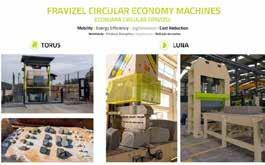
YOU take the stage but TOGETHER we go further and GREENER.
Decarbonization of the Stone Sector
With 40 years of history, Fravizel develops and manufactures sustainable innovation (social, economic, and environmental) for the extractive sectors. It has more than 90 intellectual property processes and won the COTEC SME Innovation Award in 2024.
It seeks to facilitate the operator's work by providing good conditions, safety, and technological attractiveness for the work (social sustainability). It advocates innovation as a lever for good time management and productivity (economic sustainability), promotes the circular economy and hybrid technology (environmental sustainability).
Fravizel has invested heavily in the decarbonization of the extractive industry, developing solutions that enable productivity gains, energy efficiency, and carbon emission reductions. Hybrid technology that improves worker safety (remote controlled technologies, increase productivity, and reduce the carbon footprint. Electra (Wire Diamond Machine), Victoria (Drilling Machine), and Aurora (Drilling Machine), increase the quantity and quality of the stone extracted by adapting to the bench, making the most of the raw material and reducing car-
CONTACTS
Email: geral@fravizel.com
Phone: (+351) 243 40 92 21
bon emissions (CO2) by up to 87% and energy costs by up to 82%. It also allows the reduction in operating and maintenance costs and the increase in the efficiency of the logistics process, transporting only what matters. The integration of digital solutions for optimized management through the Fravizel ON platform, allows remotely access and promoting a safer and informed work environment, as they will have access to all production data in real time.
The company also develops automated circular economy lines with presses up to 1000 tons and tumbled stone machines (Figure 2), which enable the efficient use of resources and the creation of high value-added products.
The decarbonization process can be accelerated through Industry 6.0 practices with integration of advanced digital technologies like automation, robotics, artificial intelligence, and other emerging tools to optimize industrial processes.
Fravizel believes the recipe for decarbonization lies in efficiency (executing quickly), cost reduction, product valorisation, and circular economy. Technological innovation can be a driver of transformation for a more sustainable, efficient, and human-centered future in the stone industry.

https://www.granitoslamecense.pt
CONTACTS
Email: geral@granitoslamecense.pt
Phone: (+351) 254 899 917
Industrial Zone
5100-879 Várzea de Abrunhai
Lamego - Portugal
41.07355, -7.782121
SALES TEAM:
Belarmino Fonseca – Manager (+351) 932 950 243 – belarminogranitos@gamil.com
Elena Montero Rivero (+34) 673 128 935 elena@intergranitos.com
Telmo Soares (+351) 934 331 125 telmosoares@granitsaj.pt
Aléxio Fonseca (+351) 926 990 397 alexio@bglstone.pt
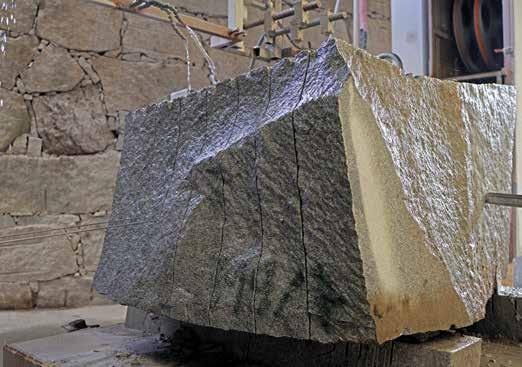
Since its foundation in April 1999, Granitos Lamecense, Lda has pursued a constant search for new technologies to improve stone processing, ensuring a final product that is increasingly precise and sophisticated. We are always attentive to market trends, investing in new raw materials, innovative designs, and sustainable solutions that respect the environment. Our ambition is to expand boundaries, conquer new markets, and bring the excellence of our products to a wider audience.
Our commitment to quality and to our clients remains unwavering. We will continue to invest in the qualification of our team, the modernization of our facilities, and the diversification of our portfolio, ensuring that Granitos Lamecense remains a benchmark in the ornamental stone sector. Currently, Granitos Lamecense, Lda. operates a factory equipped with state-of-the-art technology for cutting and shaping stone, from the smallest tile to the complexity of a monumental project. By combining a young and skilled team with cutting-edge technology, Granitos Lamecense has been able to design and produce exclusive pieces, standing out from the traditional market segment. Our modern and innovative machinery, for both cutting and finishing, ensures supply in both quantity and quality.
The flexibility of our processes allows us to meet the needs of small, medium, or large-scale projects. We own three granite quarries,

which enables us to control the entire process—from block extraction and raw material selection to cutting and finishing.
Granitos Lamecense works with all types of stone, both national and international, from traditional Granites, Marbles, and Limestones, to synthetic materials such as Silestone, Compac, among others.
Custom-made products include, among others: Steps; Risers; Jambs; Window sills; Setts; Curbs; Edging stones; Slabs; Pedestrian ramps; Flooring; Handrails; Kitchen countertops; Ashlar stone; Borders; Wall cladding; Sculptures; Pillars; Balusters; Barbecues; Fireplaces
We offer a distinctive selection of finishes that adapt to different projects and spaces, enhancing the unique features of each stone: Honed; Sandblasted; Bush-hammered; Shot-blasted; Polished; Sawn; Waterjet cut; Flamed; Brushed
https://www.granumlux.com
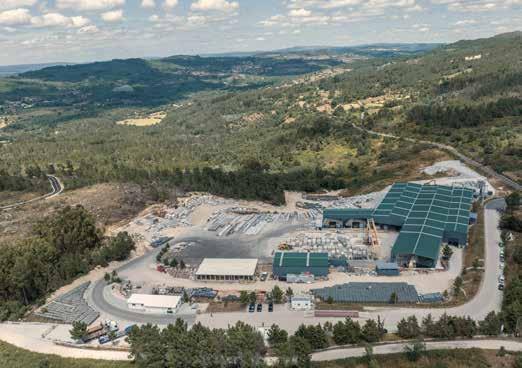
Made with precision. Delivering trust.
Based in Mangualde, in the heart of Portugal, GRANUMLUX specializes in the transformation of natural stone for architectural, industrial and landscape applications. As one of the founding companies of the SPATIUM PETRA GROUP, it plays a vital role in supporting the Group’s commercial operations in Europe and reinforcing its technical delivery capacity for high-specification projects.
With two active quarries and a fully equipped factory, we operate with complete control over the stone’s journey – from extraction to transformation. Our materials – including grey, black, yellow and pink granites – are selected for their strength, durability, and visual consistency, then expertly transformed into solutions tailored for landscape projects, public spaces, urban design, architectural features and building façades.
We are focused on producing cut-to-size elements and technical components with precision, speed and flexibility. Our factory operates with advanced equipment and a dedicated technical team, capable of handling custom formats, finishes and tolerances that meet the expectations of designers, contractors and engineers alike.
CONTACTS
Email: geral@granumlux.com
Phone: (+351) 232 243 014
Whether for one-off interventions or large-scale developments, we are committed to meeting deadlines without compromising quality.
At GRANUMLUX, we believe in long-term partnerships. Our role extends beyond production – we provide logistical coordination, project support and technical guidance, ensuring seamless service from material selection to delivery. Working in synergy with other companies in the Group, we help centralize and streamline operations for our European clients.
Our products have been featured in public and private works across Europe, serving demanding clients who value reliability, precision and transparency. This trust has been earned through consistency, technical rigor and a clear understanding of what each project requires.
With a foundation built on knowledge and a future driven by service, we continue to shape natural stone into performance-driven results – made in Portugal, delivered with purpose.
Empowering projects with expertise – from Portugal to the world.

https://www.jmendesnobre.com
Email: comercial@jmnobre.pt
Phone: (+351) 925 089 553

In the heart of the stone industry, one name has stood the test of time - J.Mendes Nobre, established in 1986 is a distinguished company that has been synonymous with the exquisite beauty of marble for decades.
Our company stands as Portugal's foremost exporter of pink marble, a distinction it owes primarily to its exclusive ownership and operation of the exceedingly rare Rosa DEL Rey quarry. This unique quarry yields a highly sought-after variety of pink marble, setting J. Mendes Nobre apart in the global natural stone market.
The scarcity of high-quality pink marble worldwide, combined with the distinctive aesthetic and geological properties of Rosa Aurora, positions J. Mendes Nobre as a critical supplier for architects, designers, and luxury developers seeking this specific material. Our control over the entire extraction and processing chain from this singular source ensures consistent quality and supply, solidifying our leading position in the export of this unique Portuguese natural stone.
Join us from September 24th to 27th, 2025, at Stand 564, Avenue E, Hall 9. Our team will be there to welcome you, discuss your project needs, and explore how our exceptional natural stone can bring your visions to life.

https://www.julipedra.com
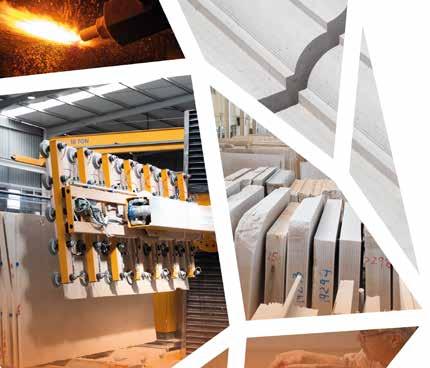
In the heart of Portugal’s Maciço Calcário Estremenho limestone region, a unique story was carved. One of tradition, passion, and vision. JULIPEDRA was born from the legacy of Júlio Lopes Pedro, a local master craftsman in natural stone who began working in 1955.
Officially founded in 1981, the company quickly specialized in cut-tosize limestone pieces of high added value, supplying demanding architectural projects such as luxury villas in the Quinta do Lago resort, in the Algarve.
From the early 2000s, JULIPEDRA expanded strongly in the domestic market, and in 2008, it began exporting. Today, it operates from a 25,000 m² industrial plant (10,000 m² covered) and controls 4 active limestone quarries. The company exports about 90% of its production to over 40 countries worldwide, from Europe and the North America to Australia and Asia.
Driven by decades of know-how, a commitment to innovation, and long-standing client relationships, JULIPEDRA is a trusted partner for architects and contractors who demand precision, quality, and reliability.
CONTACTS
Email: geral@julipedra.com
Phone: (+351) 262 929 766
The factory is equipped with state-of-the-art machinery for both cutting and finishing, capable of producing large or small volumes without compromising quality. Sustainability is also a priority: all waste is treated and reused, and a large part of the operation is powered by solar energy.
JULIPEDRA offers a full range of natural stone solutions:
• Wall cladding (tiles or custom-cut, for interiors and façades)
• Flooring (interior, exterior, cobblestones, public squares)
• Stairs and copings (bespoke, technical detailing available)
• Architectural elements (columns, sinks, cornices, fire surrounds, etc.)
Each project is approached with care, ensuring the selection, extraction, and production of stone align perfectly with the client’s expectations.
Whether for contemporary design or classical architecture, JULIPEDRA is a reference in Portuguese limestone combining heritage, innovation and craftsmanship to bring stone to life in projects across the globe.

Email: luiscristo@magratex.pt / miguelrebelo@magratex.pt
Phone: (+351) 268 891 650/651
M. (whatsapp) (+351) 964 922 732
Facebook: https://www.facebook. com/magratex.portugal
Instagram: @magratex.marble.pt
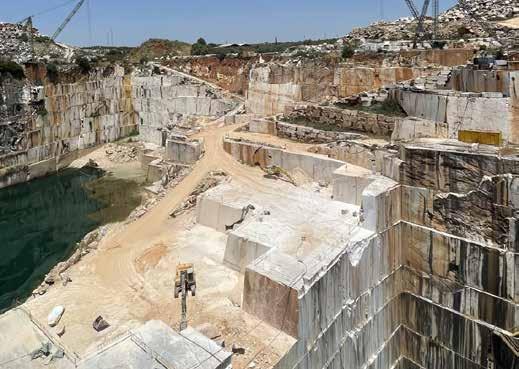
Our Story in the Spotlight:
• A Visionary Beginning: Since 1962, we have embarked on a journey where our passion for natural stone transforms each block into a true work of art. Founded to conquer markets, we first focused on Germany but today shine in more than 50 countries worldwide.
• The Raw Material of Excellence: With dedication and an unwavering focus on sourcing the finest materials, Magratex takes pride in its standout quarries – ESTREMOZ and D’EL REY.
• Innovation that Transforms: In 1982, the construction of our factory in Borba raised our standards, equipped with state-of-the-art machinery and CNC technology, allowing us to create exclusive ornamental pieces and custom artwork for unique projects.
• A New Chapter: In September 2023, Magratex joined the Multimármore Group, a company with more than five decades of marble-extraction experience. This strategic acquisition added three new quarries to our portfolio and significantly increased the availability of high-quality Portuguese marble for international markets.

By integrating with Multimármore, Magratex gained a more robust operational structure - through synergies in sourcing, new production lines, and expanded logistics - strengthening our dedication to sustainability, innovation, and operational excellence.
• Commitment to Perfection: Every detail matters. Our team ensures that from simple solutions to fully customized projects, each step of the process reflects our dedication and expertise.
At Magratex, we aim to build lasting stories and partnerships. We merge tradition with innovation to create solutions that inspire, captivate, and endure - because in every stone, there is a story of success!
https://www.marcant.pt
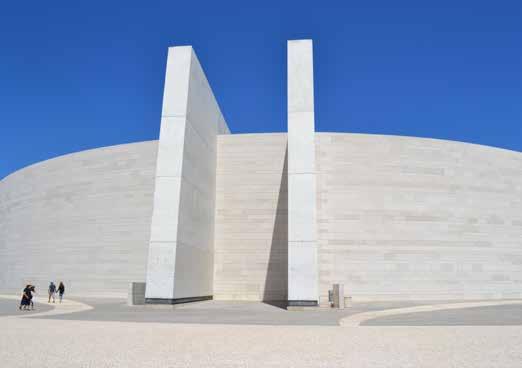
Since 1967, MARCANT has stood for quality, precision, and refinement in the transformation of natural stone – particularly marble and limestone. Based in Portugal’s historic stone region, the company has earned a reputation as a reliable partner in both traditional and contemporary architecture, delivering refined stone solutions to some of the most demanding markets.
For over five decades, we’ve combined artisanal craftsmanship with industrial capability. Our factory in Leiria processes raw blocks into custom-finished slabs, tiles, and architectural components – offering a variety of finishes, dimensions, and selections that meet the highest aesthetic and technical standards. Whether for interior design, exterior cladding, façades, or urban landscaping, our materials are chosen for their elegance, uniformity, and performance.
In 2024, we became part of the SPATIUM PETRA GROUP – joining a network of stone companies operating across Africa and Europe. This strategic step expanded our operational reach and unlocked new potential for collaboration, access to exclusive materials, and integration into global project supply chains.
CONTACTS
Email: info@marcant.pt
Phone: (+351) 244 741 403
What defines us today is more than heritage – it’s our ability to evolve. Our dedicated team brings technical knowledge, creativity, and project sensitivity to every order. From working side-by-side with architects and designers to adapting to each project’s specific requirements, our approach is flexible, transparent, and solution-oriented.
We are proud to have contributed to emblematic architectural and cultura projects, including Kuwait’s Sabah Al-Salem University City and the Sanctuary of Fátima in Portugal – both reflecting the trust placed in our know-how and ability to meet the highest design and technical expectations.
With the support and synergy of the Group, we continue our mission to be a benchmark in the transformation of natural stone – with the capacity, professionalism and vision to deliver on projects of any scale.
Crafting stone into statement – from Portugal to the world.

Email: geral@marfilpe.pt
Phone: (+351) 244 768 030/244 768 120
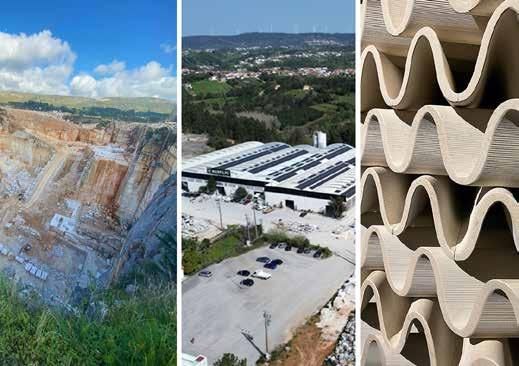
Marfilpe is a Portuguese company with more than 25 years of history, recognized as a reference in the natural stone sector in Portugal.
Present throughout the entire value chain of the industry, Marfilpe follows the journey of natural stone from extraction, through the transformation process, and culminating in the final product.
Owning two quarries of Portuguese limestones (Moleanos and Ataíja), the company ensures its capacity to meet large-scale project demands from both national and international clients, while guaranteeing the quality of the work delivered.
With a factory equipped with cutting-edge technology, this production unit is where the metamorphosis of raw material takes place, enabling the supply of all types of products (blocks, slabs, and custom-cut pieces with a wide variety of surface finishes).
Through the support of its Innovation and Development Atelier, Marfilpe guarantees the quality of the stones it markets and their adaptability to different architectural, meteorological, and geological conditions.
Strategically and consistently, Marfilpe has expanded towards a

growing international client base from diverse emerging economies. Today, exports to international markets already account for about two-thirds of the company’s turnover.
Aware of the importance of its present actions for the future, Marfilpe actively pursues sustainable development across environmental, economic, and social dimensions. Several measures reinforce this commitment, including the continuous reduction of waste inherent to its activity, investment in circular economy projects, installation of systems that generate clean and sustainable energy, implementation of steady and sustained economic growth, as well as social initiatives within the communities in which it operates.
Marfilpe is committed to quality management, certified under ISO 9001, and driven by a spirit of continuous improvement in both its internal processes and its service to clients.
Believing that every stone tells a story, Marfilpe strives to honor this natural raw material in every project it undertakes.
MARFILPE MOLEANOS OF PORTUGAL
https://marmoresrosal.com
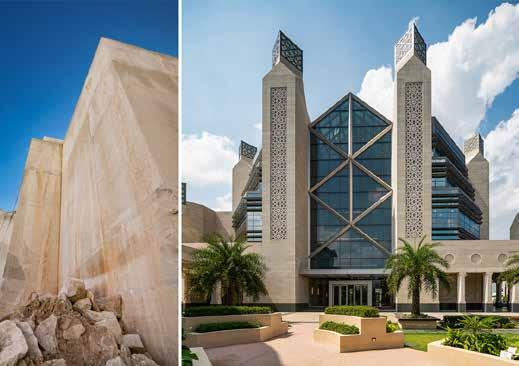
The elegance of Portuguese natural stone in major international projects
Founded in Portugal, Mármores Rosal is a benchmark in the extraction, processing, and export of natural limestone, with special emphasis on the prestigious Moca Creme and Cabeça Veada. With decades of experience in the sector, the company combines tradition and innovation to bring the beauty and durability of Portuguese stone to landmark projects worldwide.
Mármores Rosal owns two quarries in the Alcanede region. The Moca quarry, with an area of 160,000 m², has an extraction capacity of around 900 m³ per month and supplies high-quality Moca Creme.
The Cabeça Veada quarry, with 40,000 m², produces up to 400 m³ per month of an exceptional stone, renowned for its high resistance and uniform appearance.
On the industrial side, the company operates several processing facilities equipped with advanced technology, including automatic cutting systems, polishing lines, custom finishing equipment, and CNC technology. This infrastructure makes it possible to tailor each piece
CONTACTS
Email: comercial@marmoresrosal.pt
Phone: (+351) 932 200 024
to the specific requirements of every project, from technical cuts to special finishes.
Responsiveness and precision in the transformation process ensure products of high quality, consistency, and refined aesthetics. Mármores Rosal’s solutions are featured in large-scale projects such as architectural façades, interior cladding, flooring, and bespoke technical applications.
With a regular presence at the international Marmomac fair, Mármores Rosal strengthens its commitment to clients, responding with flexibility to every technical challenge.
We export to more than 30 demanding international markets.
More than a supplier, Mármores Rosal is a strategic partner in creating spaces that enhance both nature and Portuguese craftsmanship.
Every project completed with our limestone is a tribute to the durability and timeless beauty of natural stone.

Email: info@niotantek.com or sales@niotantek.com
Phone: (+351) 928 036 887
NERE, PITE, Rua circular norte, s/n, 22 - 7005-841 Évora, Portugal
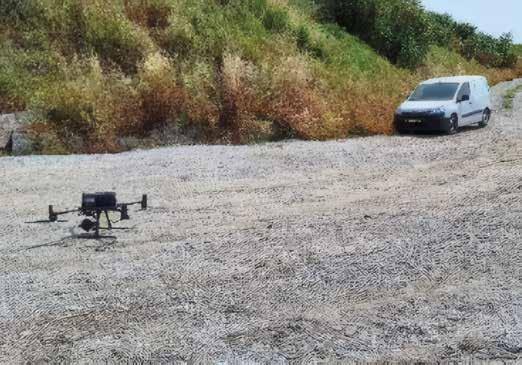
NIOTANTEK® is a brand of ARROW4D – Consultores de Engenharia e Geofísica, Lda., based in Évora (Portugal). Our mission is to develop innovative technological solutions for the intelligent management of quarries, landfills, and mines. Through advanced digital systems, such as those integrated into the NIOTANTEK® platform, we support companies in the extractive sector in optimising operations, reducing waste, and minimising environmental impact. Our goal is to promote a more efficient, safe, and sustainable exploitation of natural resources. We develop software technologies that capture and digitise reality in 3D, allowing total control of processes and monitoring of volumes. With this technology, it is possible to inventory and track products, reducing costs and allowing the sale of by-products, while also minimising CO2 emissions.
Artificial Intelligence (AI) is revolutionising the extractive industry, making it more efficient and sustainable. AI algorithms analyse large volumes of sensor data to more accurately predict scenarios such as machine energy consumption, operational process optimisation and 3D distribution of rock masses, and monitoring and mapping of landfilled and extracted volumes. These predictions help to adjust

mining plans, making operations more effective, with lower costs and environmental impacts. In addition, AI can predict the need for equipment maintenance, avoiding costly failures and unexpected downtime. The use of AI to monitor machine performance also improves operational safety, as well as operational and future decision-making. NIOTANTEK® is able to integrate AI algorithms that enable automatic traceability of rock blocks, from their origin to the factory exit. This process makes production management more efficient and accurate, reducing errors and improving quality control.
Continuous technological evolution will bring more innovations that will make the extractive industry safer, more efficient, and more sustainable. Digitalisation and AI are not just trends, but essential transformations for a greener and more attractive sector. Companies that invest in technology are better prepared to face the challenges of the future and play a crucial role in building a more responsible and resilient extractive industry. NIOTANTEK® continues to lead the transformation of the sector with innovative digital solutions that drive smarter and more sustainable extraction.
https://www.polimagra.pt
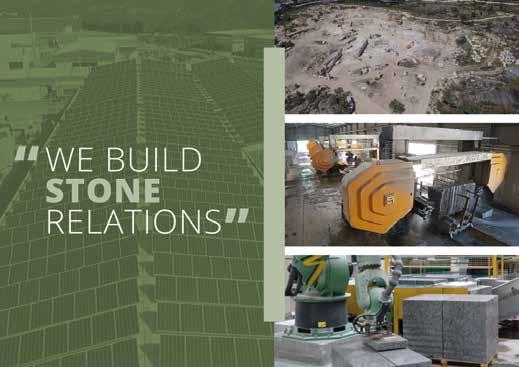
Polimagra is a benchmark company in the granite processing sector, standing out for its quality, technological innovation, and commitment to sustainability. With a strong presence in several international markets, Polimagra promotes the excellence of Portuguese granite, combining tradition with modernity.
With more than two decades of activity, the company operates seven quarries located in geologically valuable areas, ensuring access to premium raw materials. Direct control over the extraction and processing of granite guarantees high standards of consistency, durability, and quality.
The industrial unit is equipped with state-of-the-art machinery, such as multi-wire cutting machines, automated production lines, and robotic systems, enabling highly precise granite processing. This investment in technology translates into efficient production tailored to the demands of the construction, architecture, and design sectors.
Polimagra is certified under ISO 9001 (Quality Management) and ISO 14001 (Environmental Management), rigorously complying
CONTACTS
Email: geral@polimagra.pt
Phone: (+351) 254 584 186
with the highest international standards. These certifications reflect its commitment to continuous improvement, customer satisfaction, and environmental protection.
Most of its production is destined for export, with an active presence in European countries, North America, and North Africa. The reliability of its products and the rigor of its processes make Polimagra a trusted partner in projects of high technical and architectural demand.
Sustainability is a central pillar of its operations. The company promotes waste reutilization, energy efficiency, and implements environmental rehabilitation plans in its quarries. This responsible approach reinforces its reputation as a modern and conscientious brand.
Continuous investment in employee training and internal innovation enables Polimagra to respond swiftly to market challenges. The team’s technical expertise and the quality of the raw material result in unique solutions that enhance granite as a noble and durable material.
With a forward-looking vision, Polimagra continues to establish itself as a benchmark name in granite processing worldwide.

Miguel Marques
Email: geral@silaco.pt
Phone: (+351) 91 727 98 64
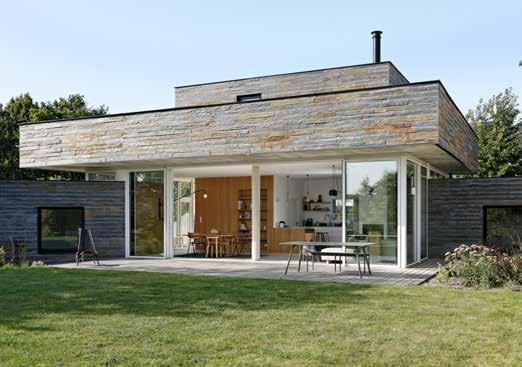
Silaco Natural Stones is a leading family-owned company, located in Portugal. Founded in 1990, the company is a pioneer in Portugal in the manufacturing and trading of decorative stones. Silaco provides an extensive range of products: Schist, Pebbles, Gravel, Rocks and Paving in Natural Stone.
Schist is a natural stone of laminated appearance, known for its durability and high resistance to the elements. Our quarry is located in the Douro valley, near the town of Vila Nova de Foz Coa, where the best Schist can be found. This stone is ideal for wall cladding and enhancing buildings facades, as well as paving and flooring for outdoor and indoor spaces.
We process and transform all our Natural Stone at our production plant. While we work Foz Coa’s Schist with the traditional tools, such as the chisel and the stone hammer, we are always looking for new cutting and finishing technologies. Our wide selection of Schist products includes slabs, palisades, strips, monoliths and cobblestone.
In 2018, we invested in a new unit dedicated to Schist finishes. Our latest Finishale range features brushed, honed and bush-hammered fin-

ish tiles. This stone also allows for the creation of unique and sophisticated household items such as benches, sinks, tables or bathtubs.
In addition to Schist, we supply a wide variety of pebbles, gravel, rocks and paving stone for all types of landscaping, ornamentation or construction projects. The installation of a roboticized packaging line in 2017 represented a major innovation, allowing us to increase our production capacity.
Since 2019, Silaco has been present at the world's largest stone industry trade shows, including Marmomac, in Italy, and Coverings in the USA. Year after year, we have been reaching new markets both nationally and internationally. Silaco has now taken Portuguese stone to more than 20 countries on various continents, from Central America to the Far East. The recent introduction into the North American market is the result of the work and dedication of a team with strategic vision, commitment and expertise in the industry.
The STONE.PT (Certified and Verified), ISO 9001 and ISO 14001 certifications demonstrate our dedication to providing high-quality products, minimizing our environmental impact, and committing ourselves to excellence, customer satisfaction and sustainable business practices.
https://www.solancis.com

SOLANCIS stands out in the natural stone industry for its commitment to valuing natural resources through proximity, responsibility, and innovation. The company combines the uniqueness of Portuguese limestone with a technical and creative approach to deliver tailor-made solutions — sustainable, distinctive, and adapted to the demands of each project, across global markets.
At the heart of its operations lies a balance between territory and purpose. For SOLANCIS, each stone application reflects a meaningful connection between materials, cultures, and lived experiences. This awareness informs an approach that is attentive to context, detail, and long-term durability.
Headquartered in Benedita, Alcobaça, the company owns 12 quarries located in the Estremadura Limestone Massif — the largest limestone reserve in Portugal — enabling full and sustainable control over its entire value chain. Extraction is carried out with technical precision and responsible planning, ensuring the efficient use of endogenous resources.
SOLANCIS’s industrial hub includes two state-of-the-art processing
CONTACTS
Email: solancis@solancis.com
Phone: (+351) 262 925 080
units, supported by a fully digitalized system that oversees every stage of production: from geological analysis and technical design to manufacturing and final delivery. This comprehensive digital integration ensures traceability, accuracy, and high efficiency, even in the most complex and customized projects.
The company offers robust technical support and integrated solutions, with a clear identity and a strong commitment to excellence. Among its most notable international projects are the IESE Business School in Madrid, Barwa Bank Tower in Qatar, and Harcourt Square in Dublin. Each project is managed by dedicated client managers with in-depth knowledge of their respective markets, ensuring close collaboration and long-term partnership.
With a presence in 71 countries and a team of 160 professionals, SOLANCIS continues to bring the uniqueness of Portuguese natural stone to the world — a story it has been shaping since 1969.
At Marmomac 2025, SOLANCIS will present natural stone solutions with soul — in a lexicon that engages and is imprinted in textures that can be felt. Visitors will find SOLANCIS at stand H6D8.

Email: sales@spatiumpetragroup.com
Phone: (+351) 915 489 974
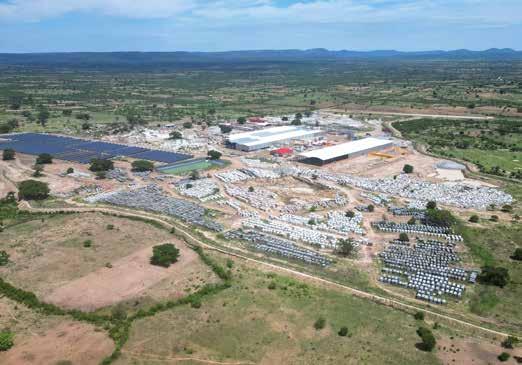
Founded in 2020, SPATIUM PETRA GROUP emerged with a bold and clear mission: to redefine the standards of the natural stone industry by uniting a network of strong, specialized companies across Africa and Europe. By integrating Marlin Natural Stones (Angola), GranumLux and LXrocks (Portugal), and later MARCANT (Portugal) in 2024, the Group offers unmatched vertical integration – from quarry to client.
We are not just a supplier – we are a full-cycle partner. Through our own quarries and advanced manufacturing facilities, we control every step of the production process: extraction, transformation, quality control, and global commercial reach. This gives our clients – from architects and designers to developers and contractors – the confidence of working with a reliable and experienced partner, capable of delivering consistently high standards.
Our offering spans a carefully curated selection of natural stones – including premium white and veined marbles, robust granites in black, grey and pink tones, elegant limestones, and exotic quartzites. Beyond stone blocks and slabs, we provide an extended range of engineered and processed materials: cut-to-size pieces for projects, high-purity calcium carbonate (CaCO3), decorative aggregates, and

refined cobbles for landscaping and industrial applications. To support this offering, the Group also maintains warehouse facilities in Baltar (Portugal), Porriño (Spain), and Arschot (Belgium) — ensuring faster access and local availability across key European markets.
Sustainability drives our strategy. Our Marlin facility in Angola alone is powered by over 9,600 solar panels, while all quarries are equipped with solar systems. We have also installed an advanced CaCO3 production plant that converts stone waste into high-quality mineral products – reinforcing our commitment to a cleaner, more circular production model.
We are proud to have contributed to major international projects, including the new Dr. António Agostinho Neto International Airport of Luanda, in Angola, and Kuwait’s Sabah Al-Salem University City. Each project reflects our versatility and ability to meet highly specific technical and aesthetic demands.
With a growing global presence and a passion for stone that connects people, places and ideas, we are ready to shape the future with our partners.
Let’s connect. Let’s create. Let’s shape what’s next.
https://www.telmoduarte.com
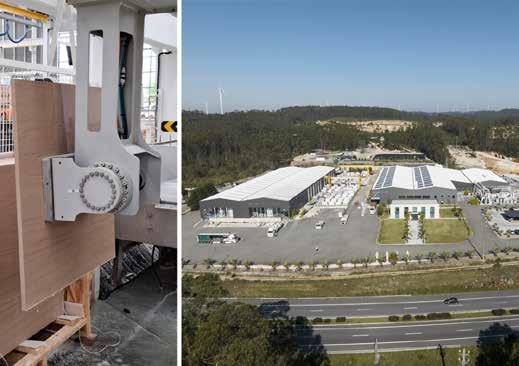
Founded in 2003, Telmo Duarte is located in the heart of Portugal, where limestone stands out in excellence. The company owns three national quarries and one in Ireland, processing and commercializing natural stone worldwide. Partnerships with other extractive companies also allow a broad portfolio of products.
Since its foundation, Telmo Duarte has been present in major international stone fairs, showcasing its products, monitoring trends, and offering tailored solutions for each project. Continuous investment in high-tech equipment, worker training, and accumulated know-how has strengthened its presence in national and international markets, consolidating customer trust and opening new opportunities.
Through an automated production system that integrates Industry 4.0 principles, advanced technology, and robotics, the company ensures seamless process optimization, high productivity, and the highest standards of quality and efficiency. Specialized production lines adapt to a wide range of technical and functional requirements, ensuring flexibility across diverse project specifications. For projects demanding extreme precision, Telmo Duarte operates five 5-axis CNC machines capable of cutting, shaping, and profiling stone with high complexity. Supported by advanced nesting technology, the company successfully delivers technical and artistic projects such as urban
CONTACTS
Telmo Duarte
Email: info@telmoduarte.com
Phone: (+351) 917 210 341
furniture and contemporary design pieces.
Sustainability is a core value. Telmo Duarte has implemented eco-responsible practices across all operations, convinced that excellence in stone processing must align with respect for the environment. Its industrial model reduces environmental impact through low-noise operations and integrated resource management. Rainwater is harvested and reused via a closed-loop treatment system, while 50% of total energy needs are met through photovoltaic panels. This is complemented by a fleet of electric vehicles, lowering emissions and reinforcing the company’s sustainable strategy.
At Telmo Duarte, sustainability is more than responsibility — it is a commitment to innovation, quality, and the legacy left for future generations.
The excellence of its materials is the result of an integrated production chain, supported by technology and a deep understanding of natural stone. This allows Telmo Duarte to meet the most demanding specifications, delivering solutions that combine durability, authenticity, and natural beauty. From quarry to final project, its limestones and marbles embody prestige and elevate the reputation of Portuguese stone worldwide.

Email: info@xdiamondsa.com
Phone: (+351) 268 886 840
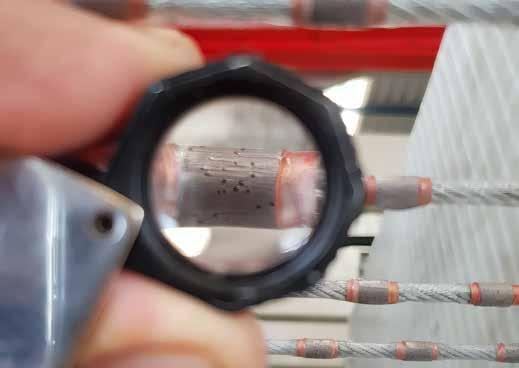
Headquartered in Portugal and with a growing presence in international markets, X-Diamond S.A. specializes in the development and manufacturing of diamond solutions for the natural stone industry. Our mission is clear: to deliver high-performance cutting technology with precision, durability, and efficiency.
Our portfolio includes diamond wires, discs, blades, and other diamond tools designed to meet the demands of every stage of the stone processing chain. We combine advanced technology, carefully selected raw materials, and constant quality control to ensure superior performance across different types of stone and cutting conditions.
In addition to tools, we also supply state-of-the-art equipment, including multiwire machines, single-wire machines, and quarry wire machines, with solutions tailored to production requirements and diverse market needs. Designed with a focus on energy efficiency and robustness, these machines integrate cutting-edge technology to enable more precise and sustainable block extraction and processing.
X-Diamond S.A. is currently undergoing a dynamic process of international expansion, with a growing presence in Europe, Latin America,

North Africa, and the Middle East. This internationalization strategy reinforces our commitment to bringing Portuguese engineering quality and innovation to the global natural stone sector.
With a highly qualified technical team and a customer-oriented approach, we provide personalized support, specialized technical assistance, and solutions tailored to the needs of each partner.
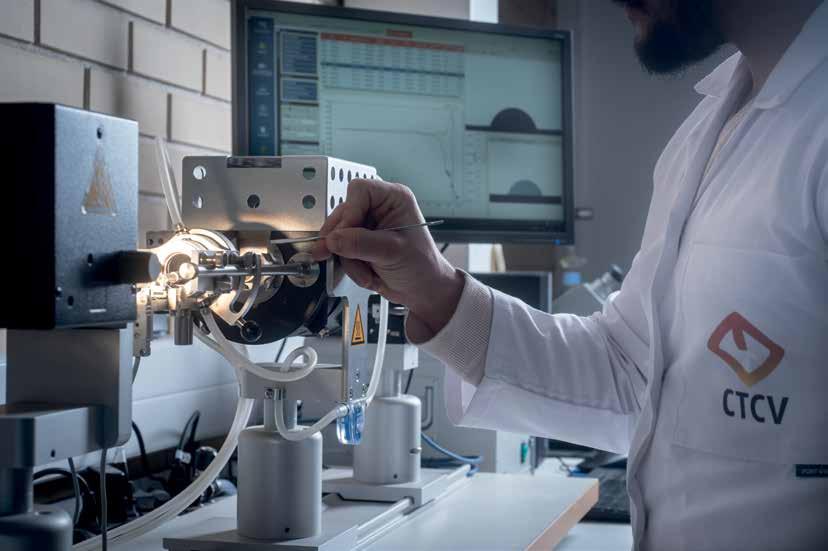
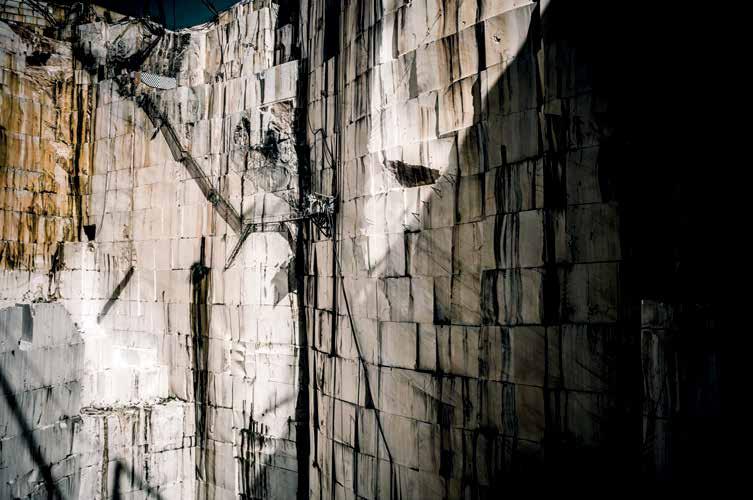
Collaborative Innovation and R&D in Materials, Products and Processes
Industry Support in the Implementation of Industry 4.0
Development of Building Information Modelling (BIM) Projects
Product Engineering and Design
Material Analysis and Testing of Natural and Reconstructed Stone Products
Monitoring of Environmental Parameters and Occupational Health & Safety
Industrial, Environmental and Quarry Licensing Processes (Environmental Performance Plan – EPP and Annual Environmental Report – AER), Legal Compliance Assessment
Environmental Impact Studies, Product Life Cycle Assessment (LCA), Environmental Responsibility, Environmental Product Declarations (EPD), Eco-Innovation and Circular Economy
Implementation of Management Systems, CE Marking and Auditing
Process Improvement and Efficiency
Continuous and Refresher Professional Training
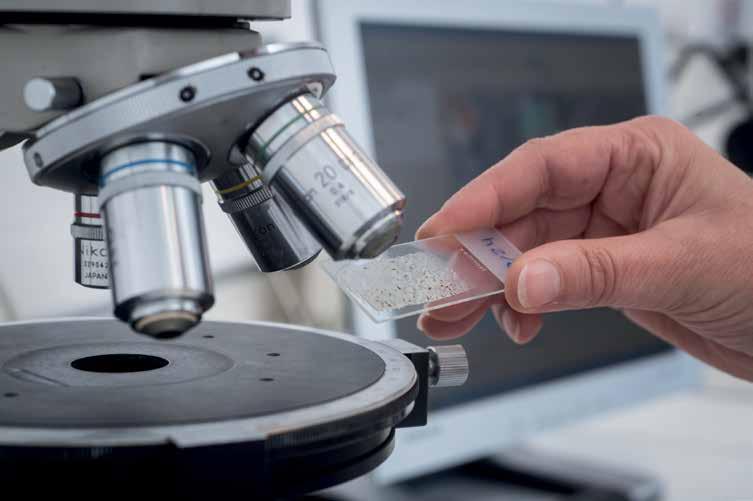
European Tests
Determination of water absorption at atmospheric pressure
Determination of exural strength under concentrated load (with and without freeze–thaw cycles)
Determination of exural strength under constant moment
Determination of uniaxial compressive strength (with and without freeze–thaw cycles)
Determination of the slip resistance by means of the pendulum tester
Determination of the abrasion resistance
Determination of geometric characteristics on units
Determination of the breaking load at dowel hole
Determination of water absorption coe cient by capillarity
Determination of real density and apparent density, and of total and open porosity
Determination of rupture energy
Determination of frost resistance
Requirements and test methods
Petrographic examination
Determination of resistance to ageing by thermal shock
Determination of resistance to salt crystallisation
Determination of sound speed propagation
Quantitative chemical analysis
Mineralogical identi cation by X-ray di raction
ASTM Tests
Absorption and Bulk Speci c Gravity of Dimension Stone
Compressive Strength of Dimension Stone
Flexural Strength of Dimension Stone
Modulus of Rupture of Dimension Stone
Abrasion Resistance of Dimension Stone Subjected to Foot Tra c
Accredited tests
Reference Standard
Method A
Reference Standard
CTCV is one of the laboratories in the network
